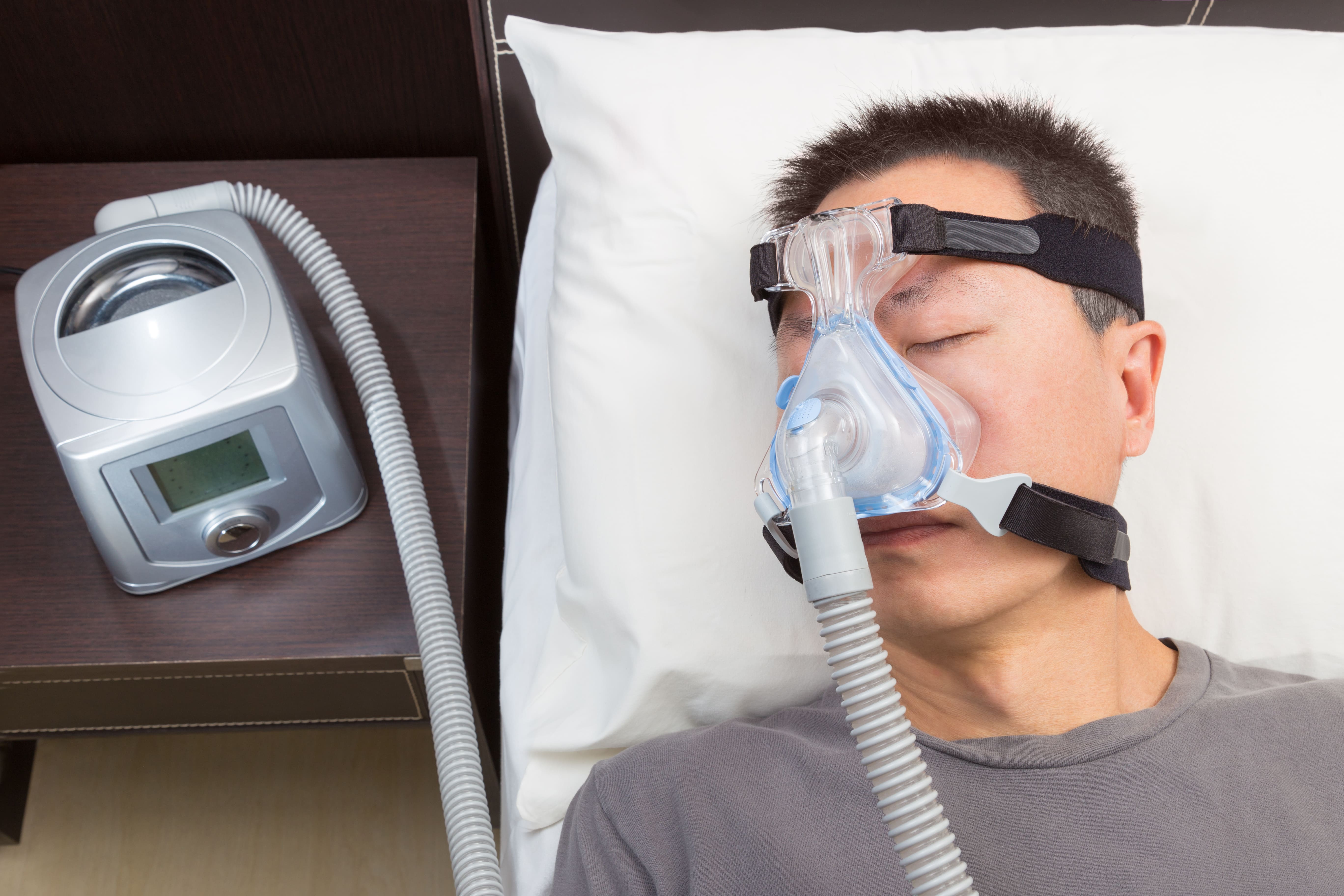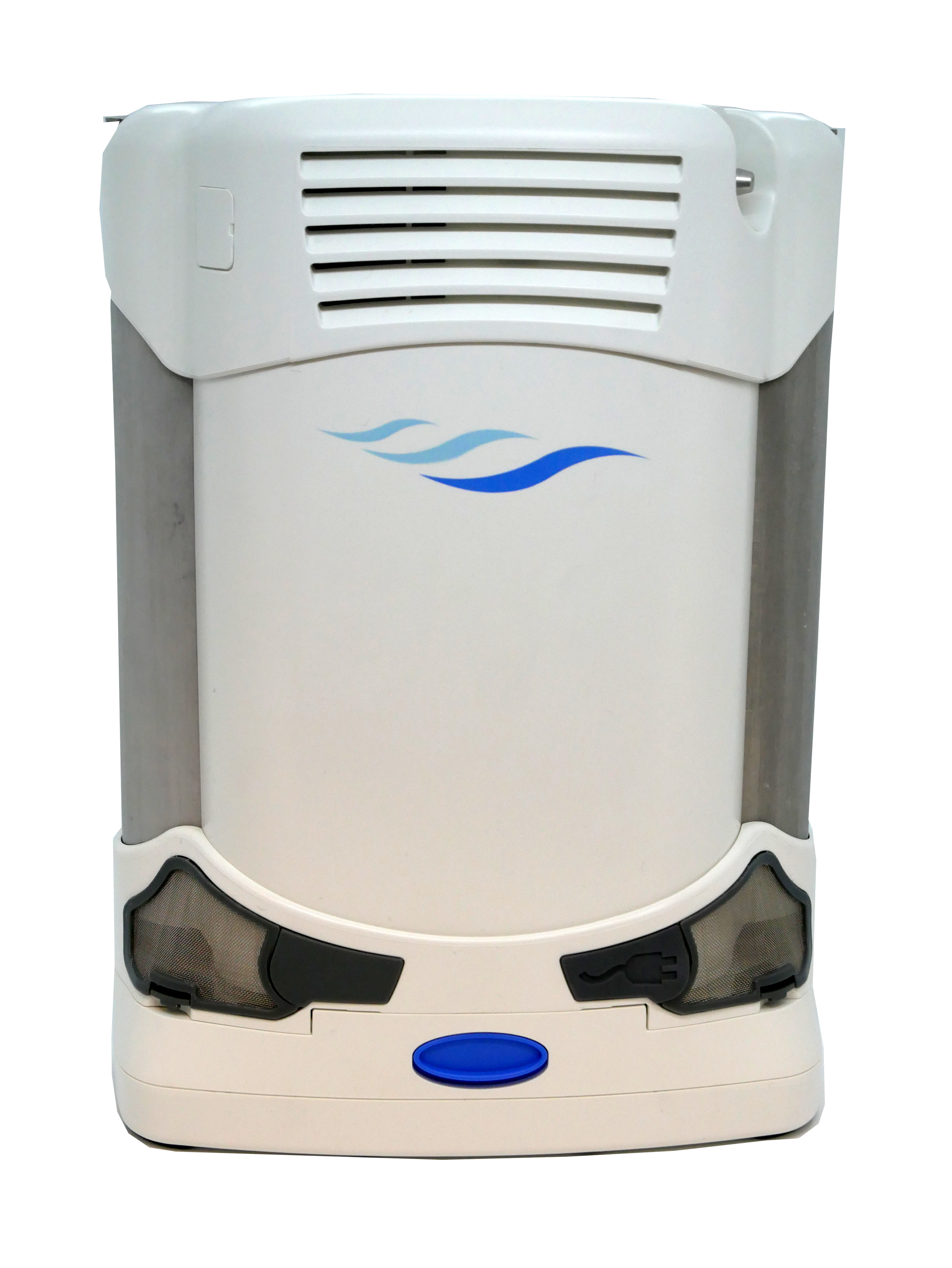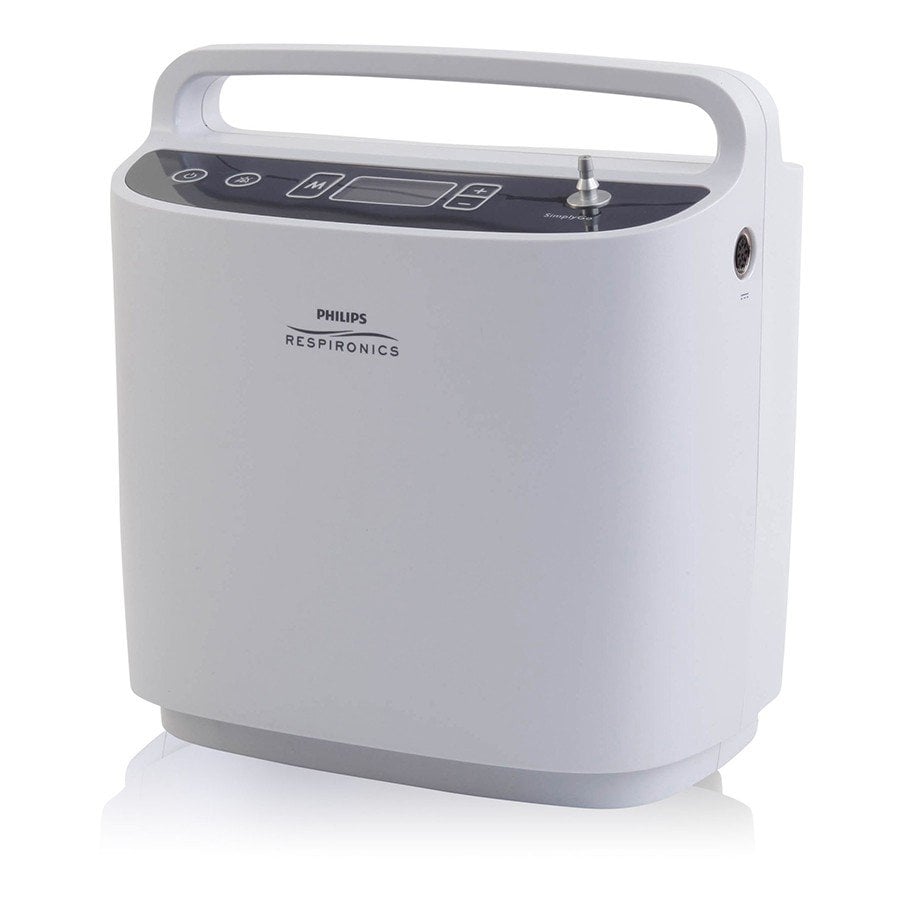.png)
Life is full of obstacles that we need to overcome. Whether it be an obstacle in our career or personal life, success always comes from our ability to adapt to these circumstances and find a way past them. Thankfully, you never have to feel “alone” when it comes to facing these challenges. There’s no shame in relying on friends and family when times get tough, especially if it’s your health that’s at stake.
Chronic obstructive pulmonary disease (COPD) is one life-changing obstacle that millions of Americans are faced with each year. If you’re diagnosed with this common lung disease, you will need to plan your life around your treatment plan which could involve drastic changes to your diet or exercise routine, as well as kicking bad habits like cigarette smoking, a poor sleep schedule, or overeating.
While this may sound like an immense barrier to overcome in your life, by breaking it down and focusing on one thing at a time, you’ll find that it’s much easier than you thought. Aside from relying on friends, family, and healthcare professionals, you should also make it a priority to rely on modern technology. At first, it may seem easier to stick with technology that you know how to use and that you’re comfortable with, however, over time you’ll find that modern technology is not as scary as it seems.
In this post, we’ll take a look at 7 different barriers you’ll be able to overcome with the help of a portable oxygen concentrator. If you have any questions, don’t hesitate to speak with one of our respiratory specialists.
How Portable Oxygen Concentrators are “More Advanced”
If you think about the phone that’s in your pocket or the computer that’s sitting on your desk at home, you might be amazed at how far these devices have progressed in the past decade. These devices have all progressed in a way that allows us to accomplish more with less effort. And in some cases, they can even automate processes that were once tedious chores.
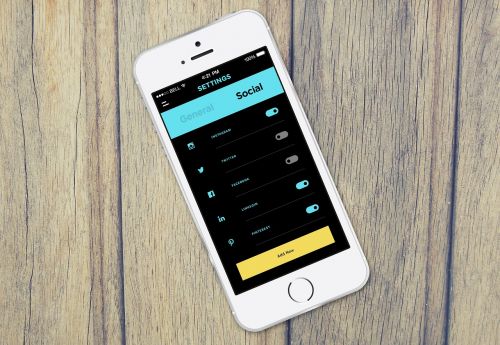
Oxygen delivery devices have progressed in much the same way. Unlike old bulky oxygen tanks, modern portable oxygen concentrators afford COPD patients the opportunity to accomplish more in their day-to-day lives with less hassle. But in order to accomplish that, oxygen manufacturers how to pursue a new type of oxygen delivery that didn’t involve storing oxygen inside a tank.
.png)
Oxygen concentrators work by generating oxygen from ambient air. They use intake vents to draw in surrounding air, then remove impurities like nitrogen and argon. It then puts out medical-grade oxygen that the user inhales through the nasal cannula. While this may sound complicated, the whole process is automated for you and all you need to worry about is learning how to turn the device on or off and adjust the flow setting which determines how much oxygen you receive. Without further ado, let’s take a look at some of the obstacles you’ll overcome with a portable oxygen unit.
{{cta('fa8abc2a-1e88-4fa3-82fd-1cb5b9ed43b2','justifycenter')}}
Staying Active
Exercise plays a crucial role in weight management, improving mood, boosting energy, promoting better sleep, and reducing your risk of developing diseases like diabetes and arthritis. Unfortunately, many people are under the impression that the need to exercise dissipates as we age or if we develop a chronic condition like COPD. This could not be farther from the truth!
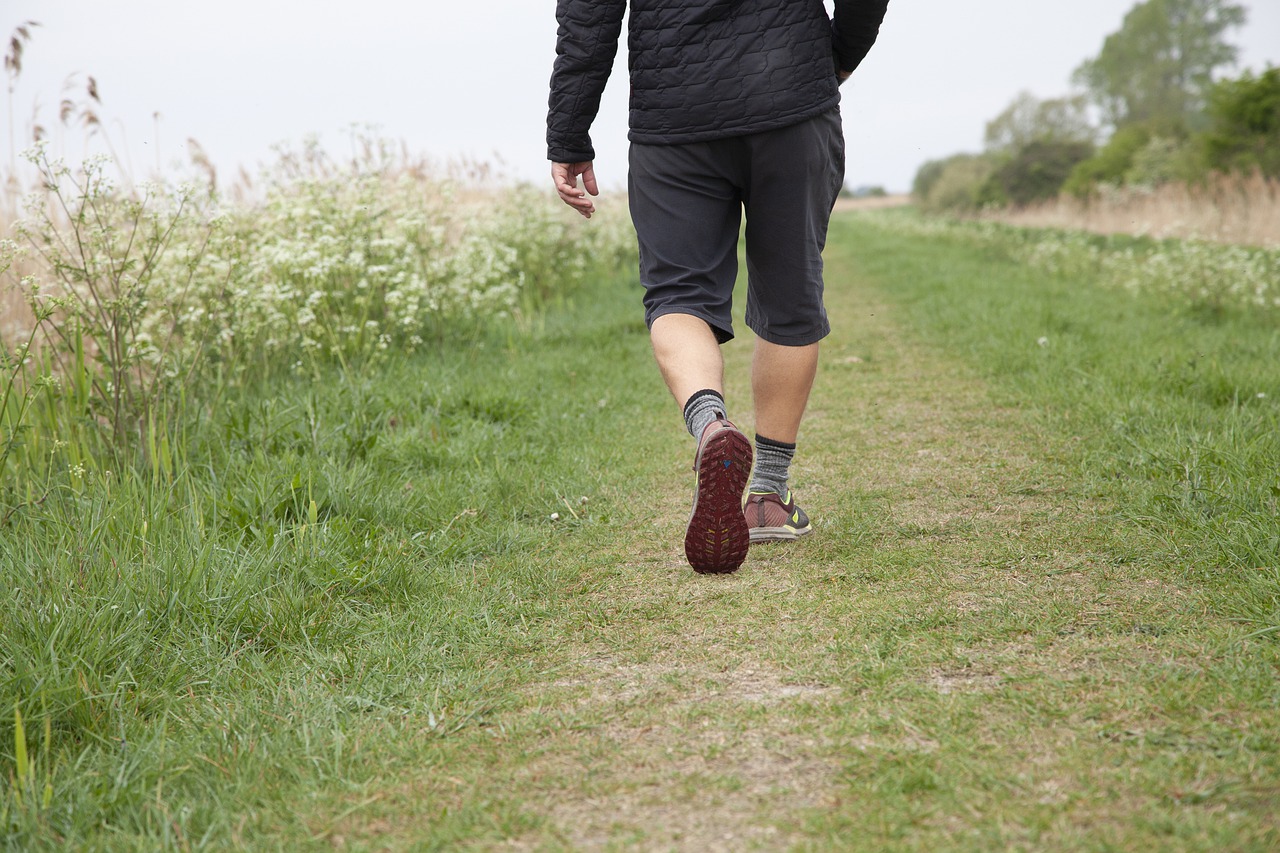
In fact, according to the Centers for Disease Control and Prevention (CDC), regular physical activity in seniors reduces your risk for common conditions like coronary heart disease, high blood pressure, and colon cancer. It’s also one of the best ways to combat feelings of loneliness or helplessness which are common in old age.
The good news is that you don’t need to commit to a rigorous exercise routine in order to benefit. Studies have shown that even a small amount of moderate exercise each day will have immense benefits for our health. What’s more important than the intensity of the exercise is how frequently you do it. Maintaining a sedentary lifestyle for more than a couple of days or weeks on end will inevitably cause your health to decline.
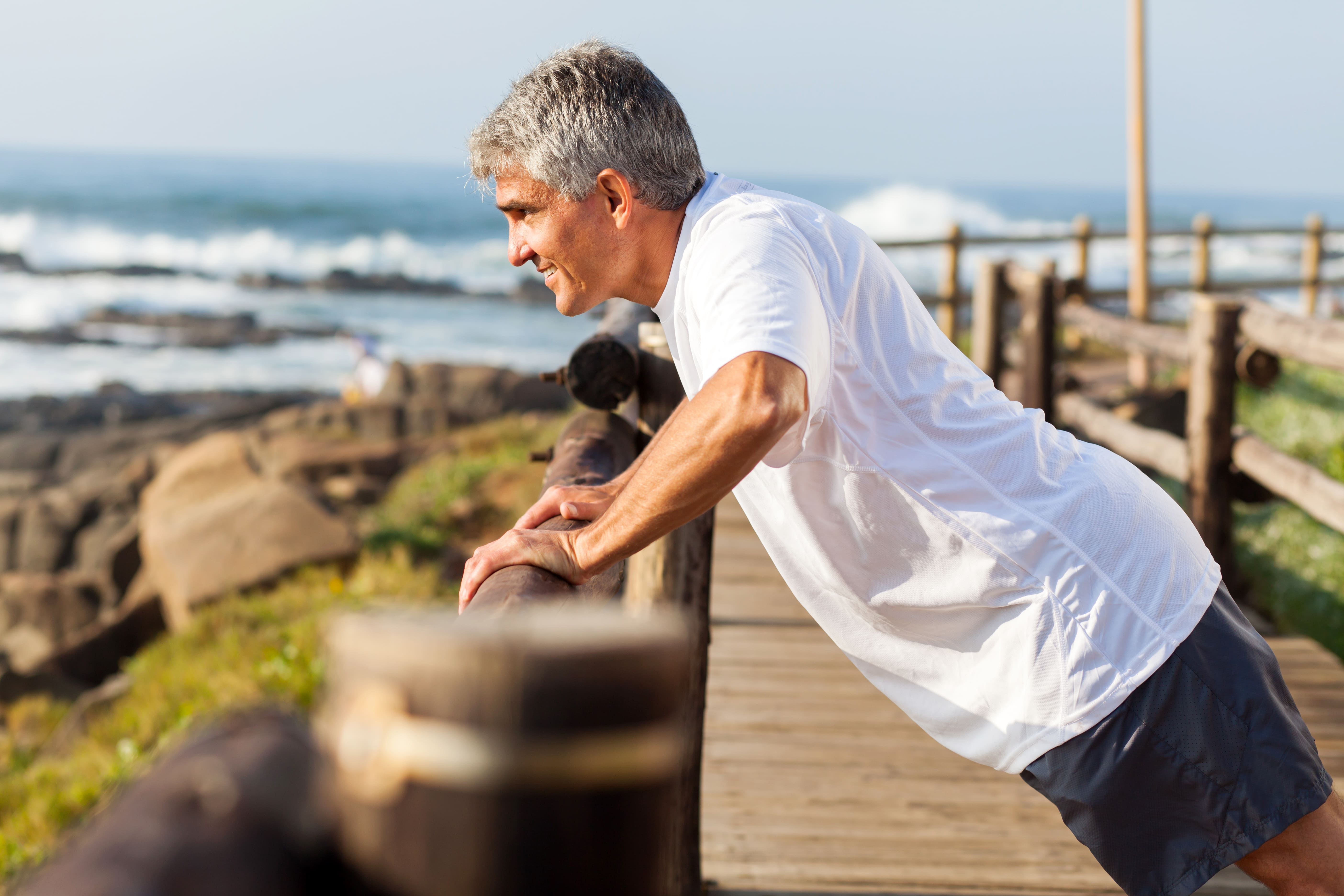
If you have COPD, you know that exercise can be a huge barrier in the way of staying healthy. Even patients with moderate (stage 2) COPD have around 50% to 79% lung function (FEV1), so it’s no surprise that many people with COPD become breathless after a small amount of exercise. This is why it’s absolutely vital that you keep up with your supplemental oxygen needs because it will ensure that your blood oxygen levels remain stable.
.jpg)
According to Healthline.com, a normal blood oxygen level is between 80 and 100 millimeters of mercury (mm HG), but it’s important to first check in with your doctor to make sure this is best for you. Either way, if you want to maintain your oxygen levels, you’re going to need a reliable portable oxygen device that you can take with you whenever you exercise. Since portable oxygen concentrators are much lighter and smaller than their alternatives, most people prefer them if they’re looking to stay active.
Doing Chores Around the House
Doing chores isn’t something that most people look forward to. They can be quite tedious and take time away from things that are much more entertaining. But COPD patients often have a unique perspective when it comes to chores because they can help them feel more in control and independent in their daily lives.
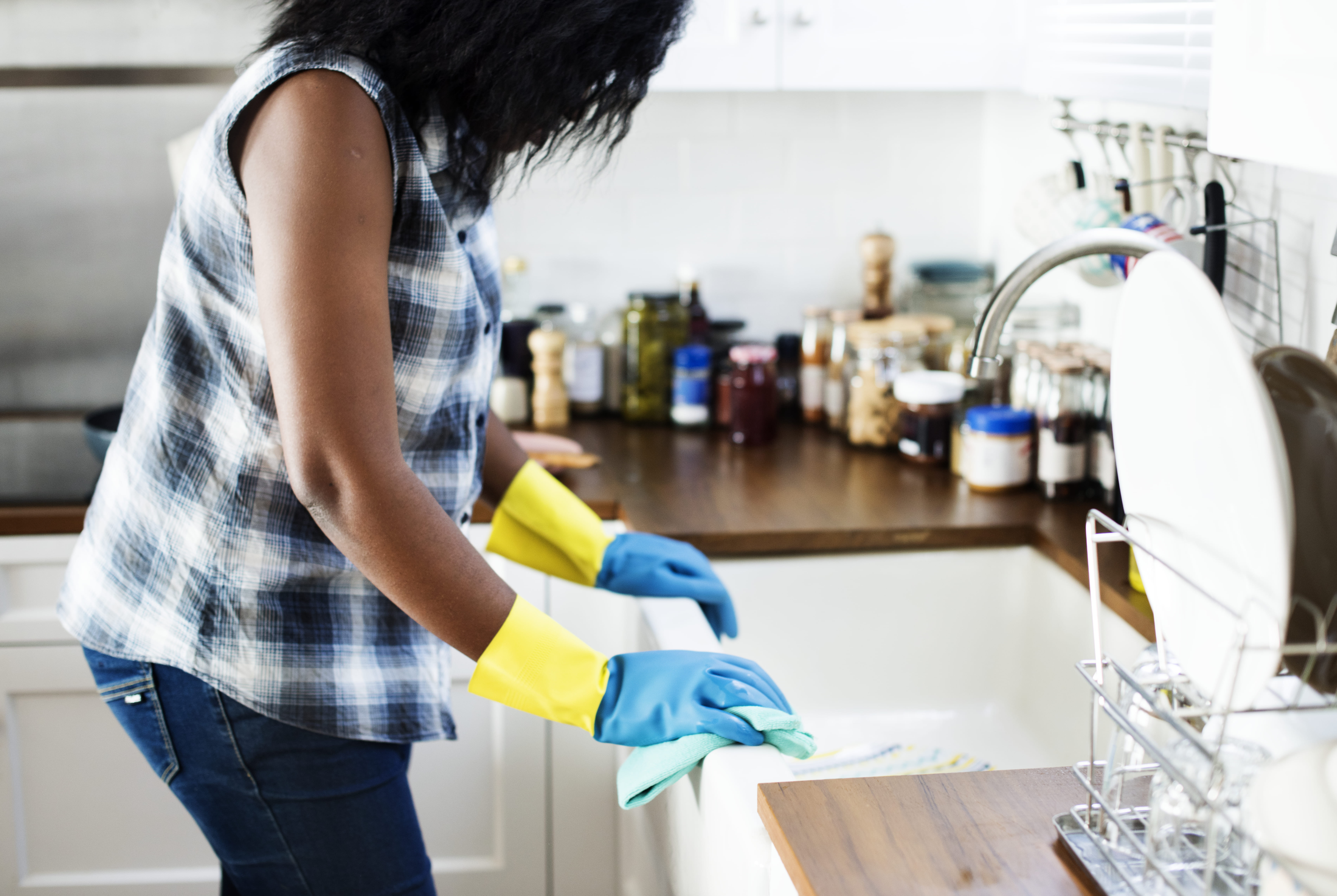
Simple tasks like taking out the trash, washing the dishes, or folding clothes can be very important for COPD patients who may feel anxiety or loneliness. These seemingly menial tasks can help keep your mind occupied in your downtime, keeping your mind off your disease and any other negative thoughts that you might come across. They can also help you keep your living space clean by reducing clutter.
Modern portable oxygen concentrators make it much easier for COPD patients to get around their own homes than old outdated oxygen tanks do. In the past, oxygen patients would need to purchase an extra long nasal cannula that they could drag around from room to room. This can be a pain, not to mention it’s also very dangerous because it can be a tripping hazard.
Traveling Long Distance
Long-distance travel is a huge barrier for many people with COPD. Since oxygen tanks are illegal on commercial flights for safety reasons, those with a respiratory impairment are required to take slower forms of transportation such as driving or riding a train or bus. If your goal is to visit your friends or loved ones across the country, you may be better off letting them come to you.
.jpg)
On the other hand, if you use a portable oxygen concentrator, you’ll be happy to find that no form of transportation is off-limits. Portable oxygen concentrators are approved by the Federal Aviation Administration (FAA) for in-flight use. All that is required is that you bring enough batteries to last you 1.5 times the length of the flight in duration. So, for example, if your flight was two hours long, you need three hours’ worth of battery. This is not a problem, however, considering concentrators like the Caire FreeStyle Comfort and Inogen One G5 can provide you with well over 10 hours of battery life on one charge.
Keeping up With Your Friends
A couple of months ago, we wrote an article titled, “7 Social Benefits of Owning a Portable Oxygen Concentrator.” In this post, we discussed the social stigma that’s often associated with supplemental oxygen therapy. From an outside perspective, oxygen users are often seen as less capable than their counterparts due to the fact that they have to lug around a bulky oxygen tank. But when they switch over to a portable oxygen concentrator, this stigma often goes away.
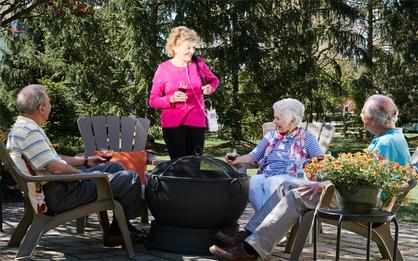
Not only are oxygen concentrator owners perceived as “more capable,” but they actually are more capable. Portable oxygen concentrators like the Inogen One G3 can easily be slung over your shoulder and carried around all day without you experiencing shoulder or back pain or shortness of breath. What’s more, it offers a variety of carrying options that can help you conceal your device and make it more inconspicuous.
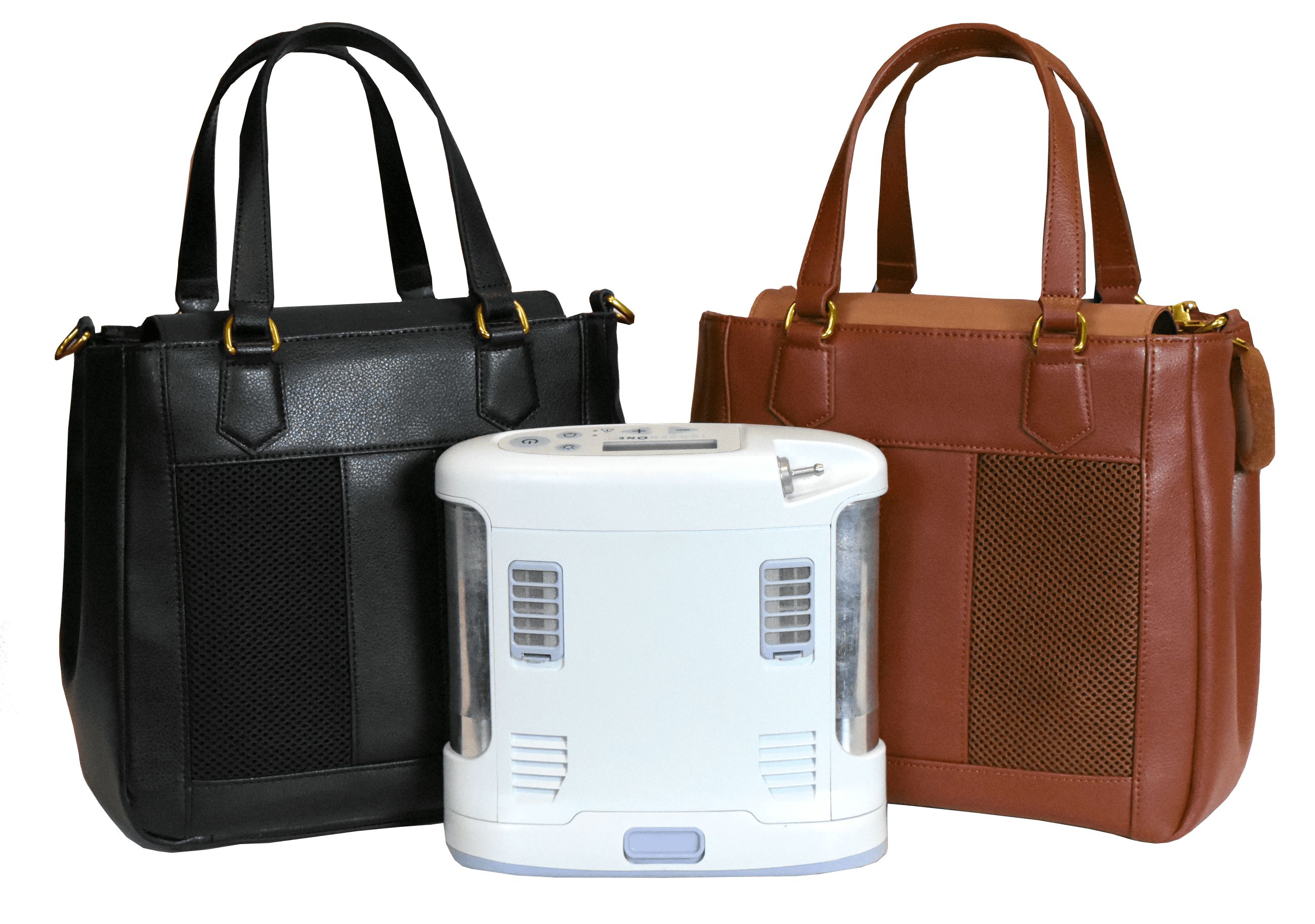
The GO2 Carryall is one such carrying option that any G3 owner can enjoy. This is a leather bag specially designed to fit the Inogen One G3. Instead of simply protecting the G3, however, they also look very stylish and match many different wardrobes. It’s also very easy to access the G3 control panel if you need to adjust your flow setting, check your battery life, or turn the device on or off.
{{cta('b59df0c1-c4de-47a8-8e1c-0d33d4b414aa','justifycenter')}}
Avoiding Hospital Visits
There’s no doubt about it, being admitted to the hospital constantly due to flare-ups or exacerbations is exhausting, time-consuming, and it can put a huge strain on your financial well-being. According to businessinsider.com, the average stay at a hospital is around $10,700. In other words, you can eat through your savings real fast if you don’t come up with some plan to reduce medical emergencies due to COPD.
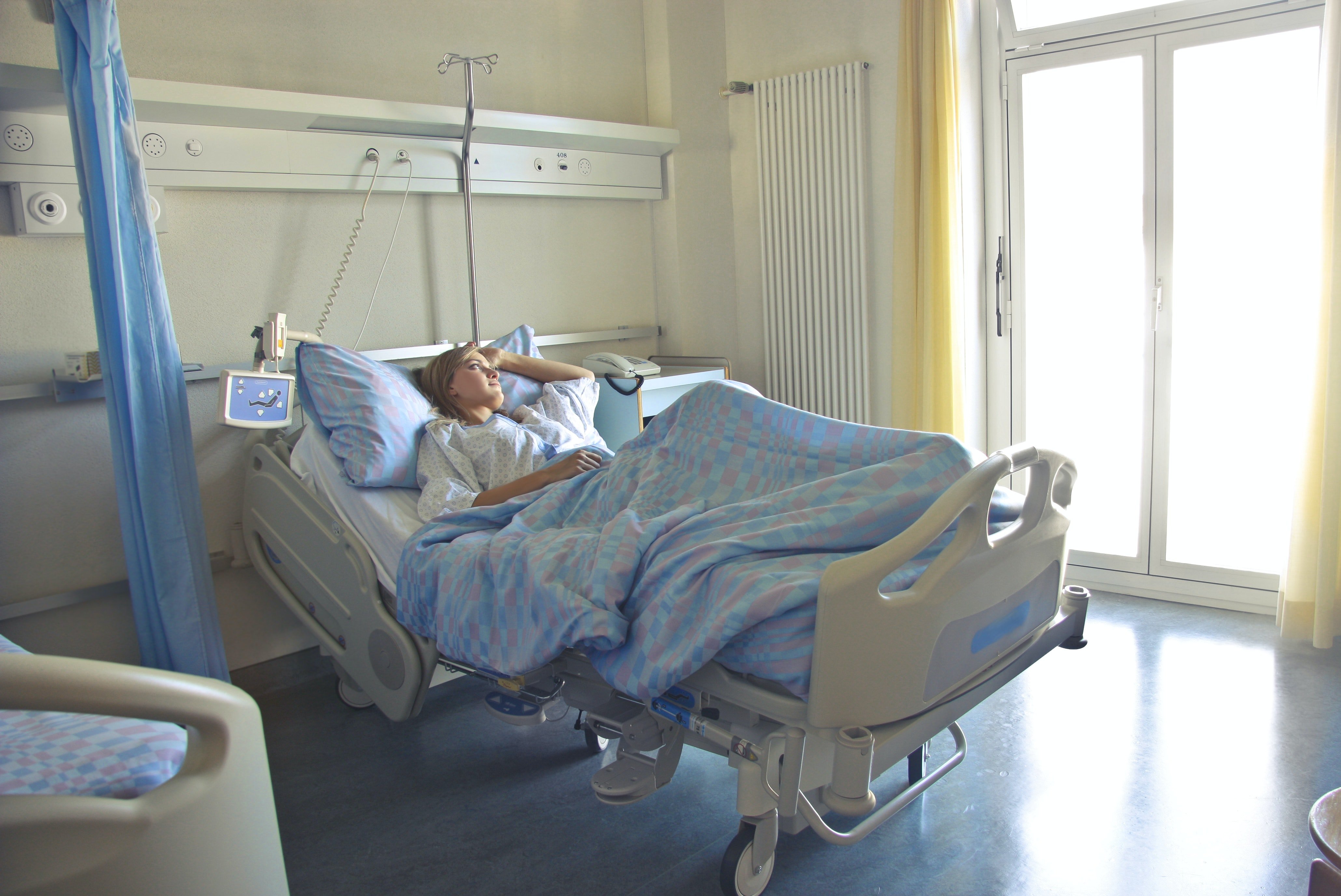
Simply put, POCs help you prevent exacerbations and flare-ups because they offer a reliable source of oxygen no matter where you are in the world. Whether you’re sitting at home or you’re exercising at your favorite park, these oxygen machines will keep your lungs fully saturated, which in turn will ensure that every tissue and organ in your body has the oxygen it needs to function properly. This will put you in the best position possible to avoid medical emergencies like a heart attack, stroke, or high blood pressure.
Another way that portable oxygen concentrators prevent exacerbations and flare-ups is because they come equipped with particle filters. These filters remove small particles from the air that you would normally be inhaling before it enters the device. This is mainly done to prevent damage to the POC itself, but it has the added benefit of purifying the air that you inhale through the nasal cannula. However, if you want to breathe the cleanest air possible, you should be sure to remove and clean the particle filter regularly. If you don’t know how to do this, consult your product’s user manual or speak with a respiratory specialist.
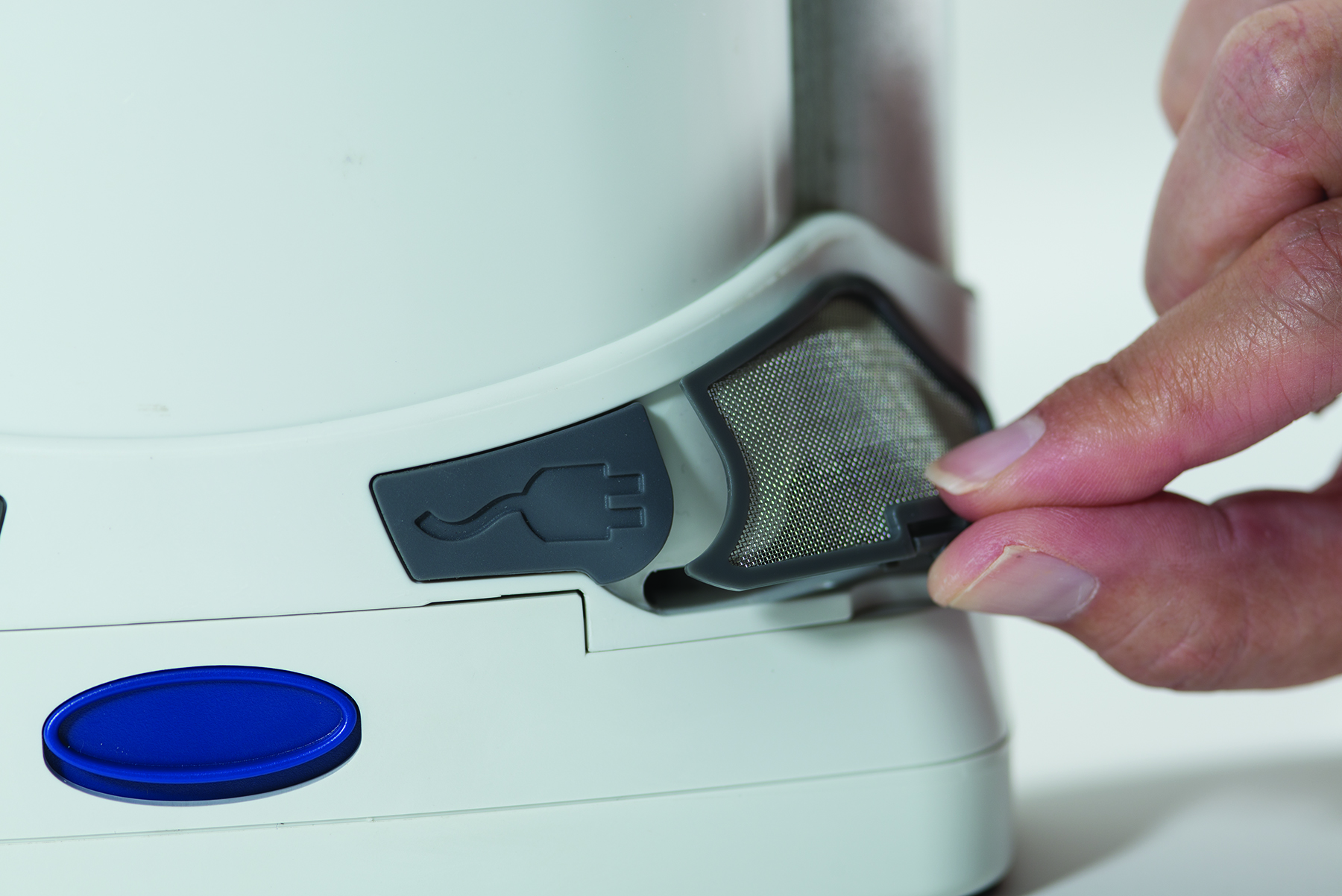
Following Your COPD Treatment Plan
A COPD treatment plan is an all-encompassing set of guidelines that your doctor will create for you to help you slow the progression of your disease and reduce symptoms. It usually involves some type of exercise routine like pulmonary rehabilitation, an improved diet, medication, and supplemental oxygen therapy. Like anything in life, the more you work at your treatment plan, the easier it will be to follow.
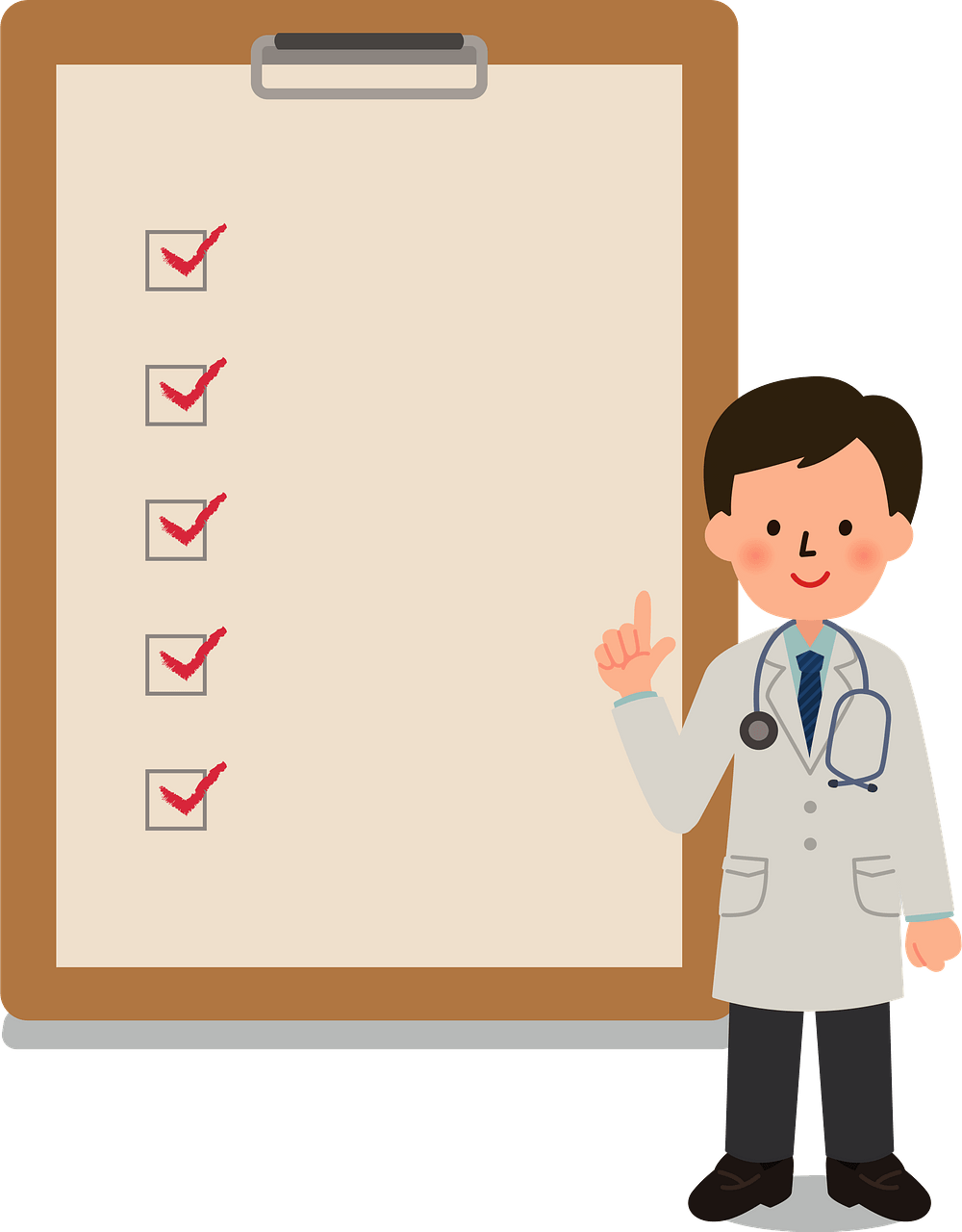
If you’re struggling to manage all these different things, however, you may benefit from a portable oxygen concentrator. Unlike oxygen tanks, you’ll never have to “refill” your concentrator. Simply plug it into a wall outlet until it’s fully charged or you can keep an extra battery charged so that you have no downtime. This will free up some time for you to work on other areas of your treatment plan such as your diet or exercise routine.
Staying Self-Sufficient
Self-sufficiency is something that can easily be taken for granted if you’re not careful. Chances are, you’ve spent your whole life working and taking care of yourself, but if you’re diagnosed with COPD, you might see this freedom slowly start to disappear. You may find yourself becoming increasingly reliant on friends or loved ones for support.
![]()
One of the reasons COPD patients may find themselves becoming less self-sufficient is because of their oxygen device. Oxygen tanks need to be refilled regularly meaning you’ll either have to go to an oxygen company yourself or have them deliver full oxygen tanks to your home on a regular basis. But if you switch over to a portable oxygen concentrator you’ll find that you never need to rely on others. Simply charge up your batteries and you’ll be able to go wherever you want, whenever you want.
{{cta('43b79c5e-6bd6-4f02-ac27-2d038d20c146','justifycenter')}}
Conclusion
Everyone faces roadblocks in their life that make it more difficult to accomplish everything we’ve set out to do. But being diagnosed with COPD can feel like facing an obstacle that can’t be overcome. Fortunately, by taking things one step at a time and relying on friends, family members, and modern technology, it is possible to make progress and live a happy life.
Most COPD patients prefer using portable oxygen concentrators over other oxygen devices like compressed oxygen, liquid oxygen, or stationary oxygen concentrators because they help them to overcome some of their greatest challenges with less stress and anxiety. They’re also far more reliable and less dangerous to use.
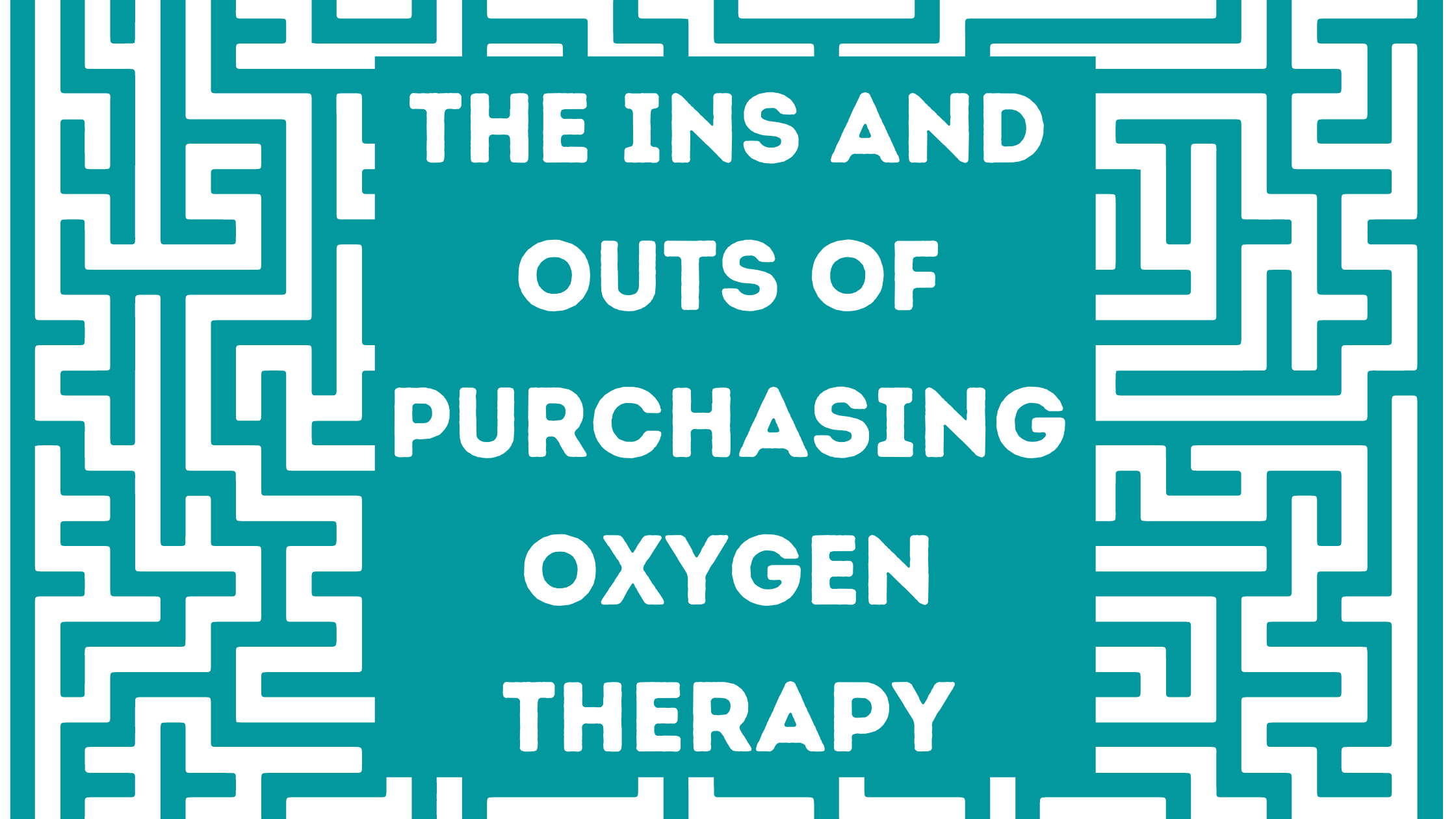
Long term oxygen therapy (LTOT) is a common treatment administered to respiratory patients in the comfort of their home, and depending on their prescription sometimes 24 hours a day. Lung diseases like COPD are chronic, and so LTOT can be life changing and life saving for people who have these low blood oxygen levels, which is also known as hypoxemia.
Oxygen therapy in itself is a simple concept, however there is confusion about where and how a person should buy their oxygen device. Anyone who is administering their own treatments or medication should be aware of every detail when it comes to health and safety, but they should also be informed about their purchasing options. Purchasing an oxygen device can feel as if you are in a maze, at each turn you find a barricade forcing you to start at the beginning again, and the cycle repeats itself. This article guides you through this maze so you know what to look out for, how to make the right choice, and more!
This article will take you through all of the ins and outs of what you should look for when purchasing your oxygen therapy device. This is your all intensive guide into the buying process of a breathing device, what you should look for, and how to make the best choice for you.
What is long-term oxygen therapy
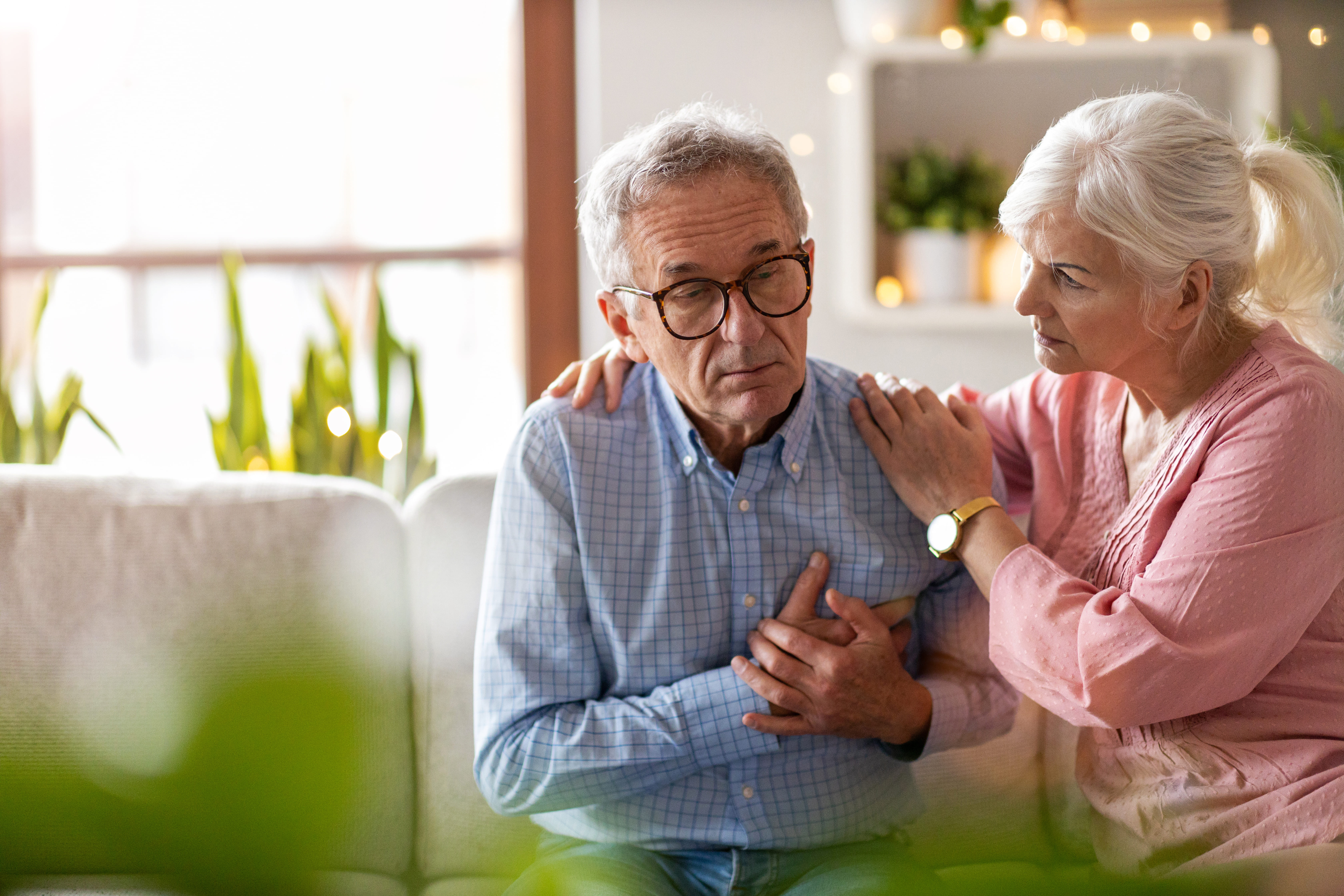
If you have ever experienced a respiratory emergency where you went to the hospital and they put tubes in your nose to help you breath, that is oxygen therapy. This is a necessary treatment if you have ever had trouble breathing on your own and it can be used to save your life.
The difference between this emergency treatment and long-term oxygen therapy is that LTOT is administered while you are at home while going about your daily life, According to International Journal of Chronic Obstructive Pulmonary Disease LTOT should be prescribed for at least 18 hours per day, although some experts suggest that 24 hours would be more beneficial.
Long term oxygen therapy, if done correctly, is proven to improve survival and other qualities of life for COPD patients with chronic respiratory failure.
LTOT doesn’t just help you live a longer life, it helps you to live more active and worthwhile life by:
- Reducing the number of hospitalizations
- Increasing your lung capacity
- Increasing your ability to exercise
- Helping you to get better sleep
- Improving your moods
- Improving your health-related quality of life
{{cta('fa8abc2a-1e88-4fa3-82fd-1cb5b9ed43b2','justifycenter')}}
LTOT would normally be administered in the comfort of your home, by you, therefore the delivery method should meet your oxygen requirements but also be accustomed to your lifestyle.
Most people are prescribed oxygen anywhere from 16-24 hours a day so, this means you should choose a device that fits into your daily routine. You have a few choices when it comes to an oxygen system. These include devices you use only at home and lightweight alternatives you can take with you when you go out.
You’ll choose a oxygen device based on:
- How often you leave the house or travel
- If you need to go up and down stairs
- Your size, endurance, and physical strength
- How much oxygen flow your doctor prescribes
Oxygen devices
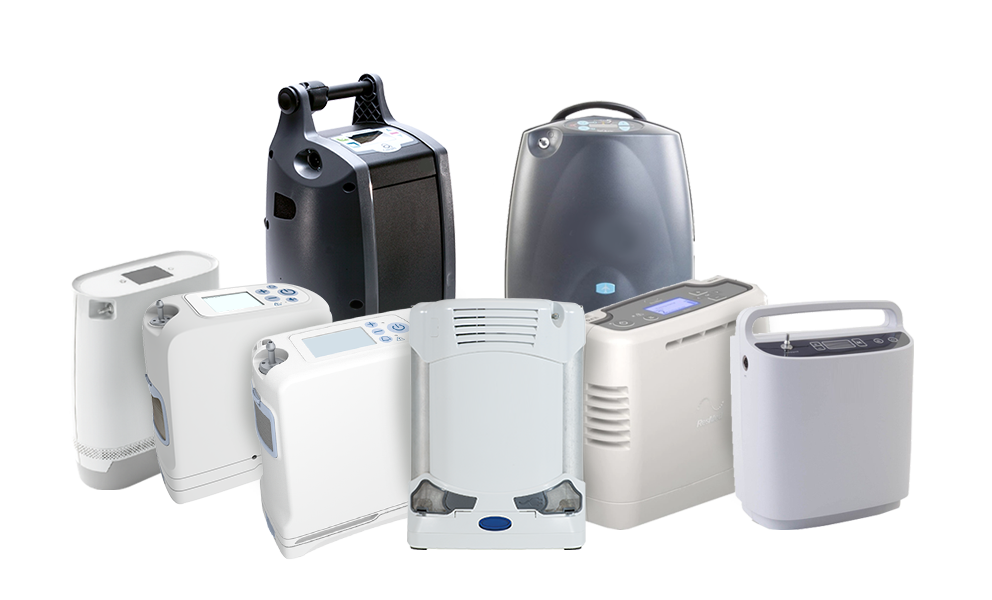
Three of the most popular portable devices you can choose from, each have their own pros and cons, and you should pick the best options for you:
- Compressed liquid oxygen tanks
- Oxygen gas tanks
- Portable oxygen concentrators (POC)
This article should give you some insight into what option is best for you.
If you already know that you are interested in buying a portable oxygen concentrator, and you are curious about which brand and model you should get, please read our other blog about the pros and cons of the best portable oxygen concentrators in 2020 by clicking the link here.
Affordability
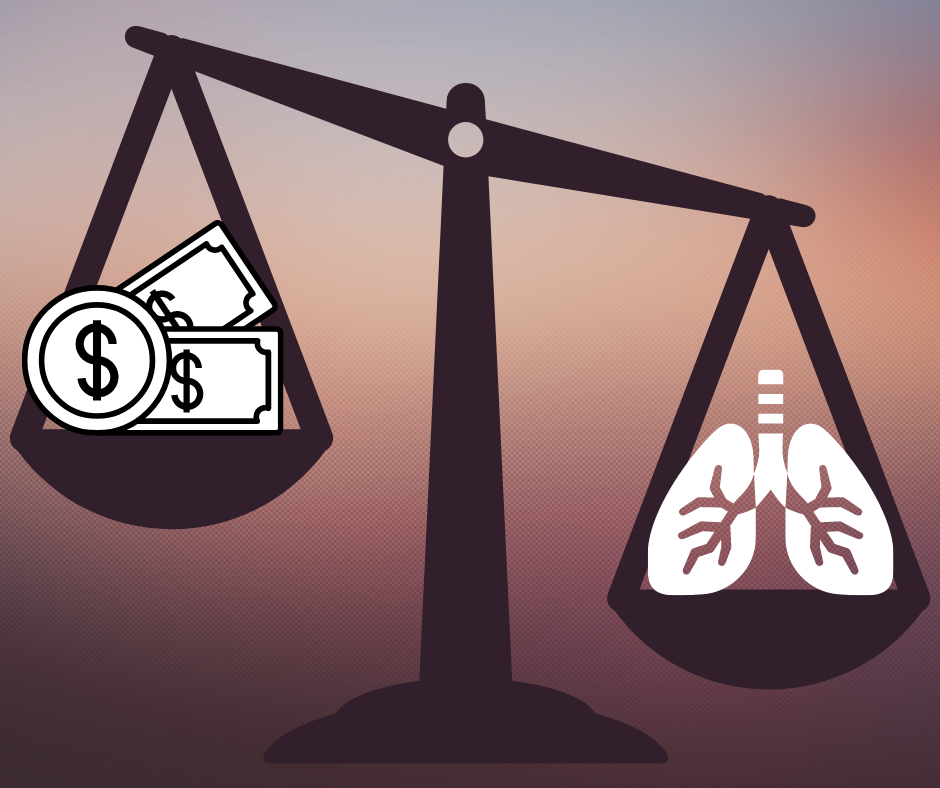
The upfront costs of portable oxygen concentrators tend to scare off oxygen patients all of the time. This is unfortunate because the prices that are posted online are, for the most part, not the price you would pay for your POC. Due to the manufacturer's advertising policies, oxygen equipment licensed distributors are required to post their prices. Even if the seller has a special, discount codes, or a sale.
So even when you simply search on google “portable oxygen concentrators prices” you will see them ranging from $2,000 to $3,000 depending on the brand, year, and model. To inquire about the real prices, you can call 1-800-946-1021 and speak with a respiratory specialist who knows these devices inside and out.
The other affordable aspect of portable oxygen concentrators is that you never have to refill the device, because it is extracting the air surrounding it, compressing and purifying it into the medical-grade oxygen that you are breathing int. At LPT medical we offer a 3 year long warranty on all our portable oxygen concentrators, so you won’t have to pay for a broken part or a malfunction!
Oxygen devices like the Respironics SimplyGo Portable Oxygen Concentrator have a compressor that is rated to last 20,000 hours. Others like the SeQual Eclipse 5 Portable Oxygen Concentrator were designed for the US Military, and it has the longest-standing track record for being durable and reliable.
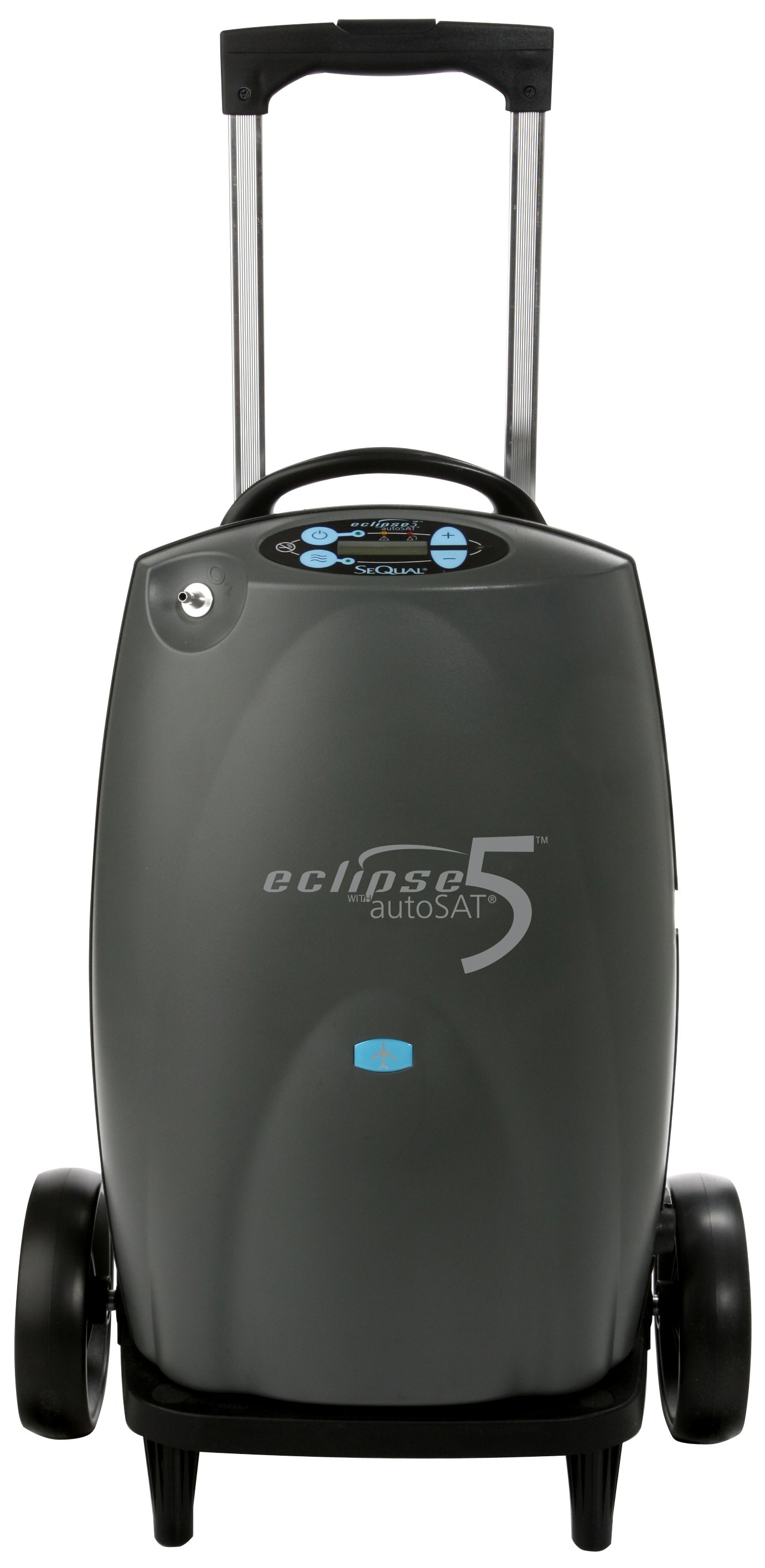
All in all, a portable oxygen concentrator is going to last you a very long time, and there are no recurring costs, all you pay for is the device upfront. Also by purchasing a portable oxygen concentrator through LPT Medical you have the option to finance and pay monthly, or buy a used and refurbished device that is less expensive upfront.
For more information about your purchasing options and prices, please read this other blog that we have linked here, or call us at 1-800-946-1201
Portable oxygen canisters must be refilled multiple times per week, each time costing you money. The bigger tanks that you leave in your home to use are even more expensive to refill. While oxygen tanks are the most traditional form of oxygen, it is also the most outdated. Even with the low-initial costs, the recurring costs eventually add up, leading to higher costs over time.
Portability

Unlike portable oxygen concentrators, oxygen tanks are heavy and bulky. Their weight and lack or portability are one of the most commonly noted disadvantages of tanks. While wheel-mounted cart systems can help to make rolling oxygen tanks manageable, the tanks themselves are still rather heavy. Lifting the tank—for example, to put it in a vehicle or carry it up a staircase—can be challenging or even impossible for some simply due to the weight of the device.
Depending on the oxygen flow you need to fill your oxygen prescription, portable oxygen concentrators are very light weight, and small in size. Units like the Inogen One G5, Inogen One G3, and the Caire Freestyle Comfort, all range in weight from 4 pounds to 6. All are small enough to fit inside a purse or backpack, and come with their own carrying case. Having such a lightweight and portable breathing device is great for oxygen patients who want to be more active and do more things, and not to mention travel by plane.
.png)
Having a portable breathing device is essential for keeping up with a consistent exercise regime that is a necessary treatment for all COPD patients. You should be getting the right amount of exercise relative to your health and ability. Having a portable device can make it easier to go for walks, golf, or do any other activities you like to do as your daily physical activity.
Having a breathing device that is designed to be potable is also great for keeping your morale high. It is no secret that having a chronic illness like COPD can be hard for patients mentally. If you have COPD and a portable oxygen concentrator you have the freedom and independence you need to live a normal life without having to adjust your daily routine to fit your oxygen device. Instead your oxygen device fits into your lifestyle.
Battery life vs. tanks
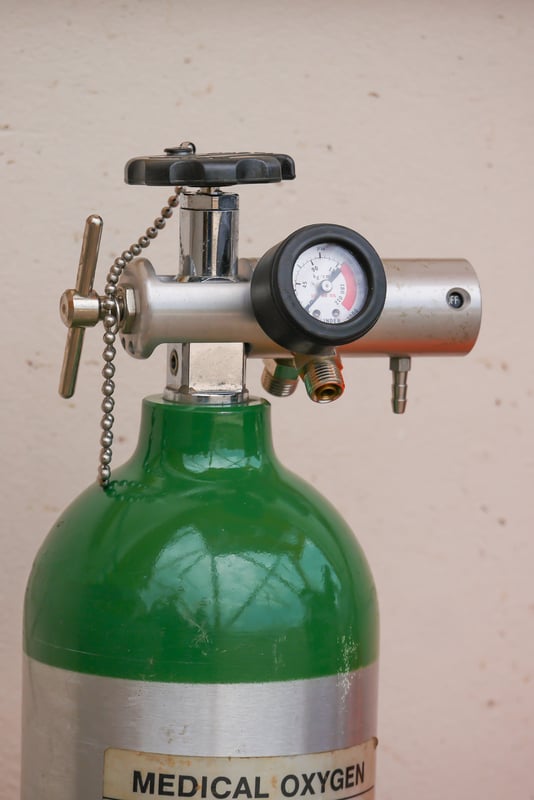
Portable oxygen concentrators generate oxygen using a rechargeable battery, depending on the unit, you can have anywhere from 3-16 hours with oxygen until you must either switch the battery to your backup, or recharge the device. You can recharge any device using an AC or DC power source, meaning you can use a traditional outlet in your home, or the cigarette lighter in your car or boat.
An oxygen tank on the other hand does not need a power source. The tanks or canisters are filled with a finite amount of oxygen that you use up until it is empty and have to get it refilled or replaced. Normally, you pay an oxygen supply company to come to your home and deliver new tanks and take your old ones. The tanks that are heavy and are hard to move around don’t run low as often, probably once a month depending on your oxygen prescription, and the smaller travel canisters run out at least once a week.
Having a battery powered oxygen device versus refilling your oxygen tanks is a personal preference, most people find that charging their portable oxygen concentrators is as simple as charging your cell phone, and having an extra battery to replace one while it charges is the most efficient option.
Insurance

Obviously in a perfect world, insurance would cover all respiratory patients' oxygen devices but this is not the case. There are some very rare situations where Medicare or insurance will cover the purchase or rental of one of our portable oxygen concentrators. In order to qualify, you have to meet strict criteria, and each situation is evaluated on a case-by-case basis.
That being said, You will need to talk to your insurance provider to understand what kinds of oxygen supplies they cover and what requirements you need to meet in order to qualify.
Medical insurance companies have a notorious reputation of denying patients coverage for medical equipment and treatments including portable oxygen concentrators. Unfortunately, Medicare is no exception. They have strict rules that make getting coverage difficult and burdensome, and they often find reasons to deny approval for a treatment even when a doctor says that it's the best option.
If you want the best possible chance of getting insurance or Medicare to pay for your medical equipment, you need to be aware of your provider's criteria on the subject. You must follow their guidelines carefully, to avoid getting rejected on a technicality.
We have a very informative blog about medicare and oxygen equipment that you can find here
In this blog ,we offer a lot of insight into the healthcare system and what it means for oxygen patients like yourself.
One example of Medicare's criteria for covering supplemental oxygen and related equipment:
- You have a serious lung disease (such as COPD, cystic fibrosis, bronchiectasis, etc.), or you have symptoms of low blood oxygen levels (such as pulmonary hypertension, erythrocythemia, congestive heart failure, etc.)
- Your health is likely to improve with supplemental oxygen therapy
- You have medical tests from your doctor to prove that you have low blood oxygen levels (and these tests were taken while your condition was stable, e.g. not during an exacerbation)
- You have tried other medications and treatments, but are still unable to get enough oxygen
- You need oxygen therapy 24/7 (Medicare will not cover supplemental oxygen therapy if you only need to use it at night)
This criteria has to be verified by your doctor in writing before you can receive Medicare benefits for supplemental oxygen. Your doctor will also have to write and submit a detailed report of your oxygen needs, called a Certificate of Medical Necessity.
Which method of oxygen equipment should you choose
.jpg)
While all of this information pertains to the oxygen user, it is important to note, that if you do not need oxygen therapy, meaning your blood oxygen levels are not chronically low enough that your doctor would recommend, let alone, prescribe you oxygen therapy, you should NOT administer oxygen therapy for yourself.
Who needs oxygen therapy

Even though long-term oxygen therapy can be beneficial for many people, not all respiratory patients need it. W
hen considering a lung disease like COPD, According to the American Thoracic Society, appropriate candidates for LTOT include:
- Patients who have an established medical regimen, with a 7.3 KPa (55 mmHg) partial pressure of oxygen measure by looking at arterial blood gases, and an oxygen saturation level of 88% or less.
- Patients who have a partial pressure of oxygen of 7.3–7.8kPa (55-59 mmHg), an oxygen saturation level of 89%, and also shows signs of hypoxemia, pulmonary hypertension, edema from right-sided heart failure, high red blood cell count or impaired mental status.
If you are unable to maintain healthy blood oxygen levels only while you sleep or when you exercise, you may also benefit from using supplemental oxygen specifically under these circumstances.
Moreover, because there are special cases, if you do not fall under these criteria but have severe shortness of breath or limited exercise capacity that may improves with supplemental oxygen you should still talk to your doctors about whether you would qualify for, and more importantly benefit from, long-term oxygen therapy.
Buying from a licensed distributor
{{cta('b59df0c1-c4de-47a8-8e1c-0d33d4b414aa','justifycenter')}}
In order to be sure that you are getting an oxygen device, for example, a portable oxygen concentrator, from a licensed distributor, you can simply look on the company’s website and find their certification. At LPT Medical, you will be happy to know that we are a family owned and operated business .
LPT Medical knows what it means to serve the community and treat our customers like family and we are committed to quality and dependability. Our track record shows that we have become one of the most trusted names in the world of oxygen therapy products offering home oxygen concentrators, portable oxygen concentrators, CPAP and BiPAP machines, and all the education you need to make the most of your equipment and subsequently your life.
When you are buying oxygen equipment, something that is so life changing and a reasonably large financial decision, you must be sure that you are buying from a company that you trust. Quality is one of the first words that should come into your head when buying any medical device. If the equipment is designed to make your life easier, it is always important to take into consideration how long your equipment will last and how efficient the machine is.
LPT Medical offers products from the most reputable manufacturers in the industry including but not limited to Inogen, Philips Respironics, Drive Medical, and more. These are innovative companies that are exceeding the limits of what’s possible for patients suffering with a debilitating respiratory condition. By offering these brands, we are here to connect more people around the country with the most state-of-the-art oxygen therapy equipment in the world.
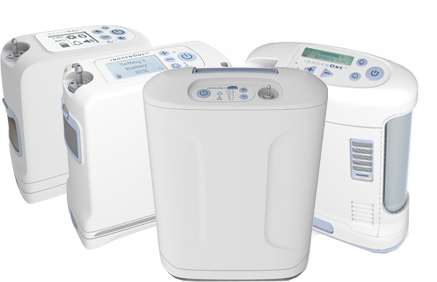
Flow settings
Depending on your oxygen needs, your doctor will either prescribe you pulse flow or continuous flow oxygen or a combination of both and you will be required to buy a device within those boundaries. It is important you do not take more oxygen and it is important that you do not try to go without it, both could do a lot of harm. If you are unsure about your oxygen prescription you should call your doctor and have them go over the process with you until you feel comfortable doing so on your own, and also during an emergency situation.
So the flow settings can be pulse or continuous, pulse gives off a bolus of oxygen every time you inhale and continuous flow settings exert oxygen constantly even when you are not inhaling.
The rate at which oxygen is flowing is known as the oxygen output, and it is most commonly measured in liters per minute. If you require more oxygen your oxygen output will be set to a higher setting and vise versa.

If you only need roughly 210- 630 mil/min of oxygen at a pulse dosage setting, you oxygen device must be able to emit that much oxygen per minute, and if you buy from a qualified company, the seller would advise for you to get a device that is capable of outputting even more oxygen than what is prescribed to you for a number of reasons.
You might be instructed by your doctor to increase your oxygen flow setting in the case of an emergency while you are experiencing an exacerbation or a flare up. In this situation you want to have a device that can increase its oxygen output so that you are able to manage the emergency how your doctor instructs you.
Also, the nature of a chronic progressive respiratory illness is that it gets worse over time. This means, that one day you might need a higher flow of oxygen than what was first prescribed to you in order to meet the demands of your body. In these cases, you want a device that will be able to adjust to your needs and increase its output before you have to buy an entirely new device that is powerful enough.
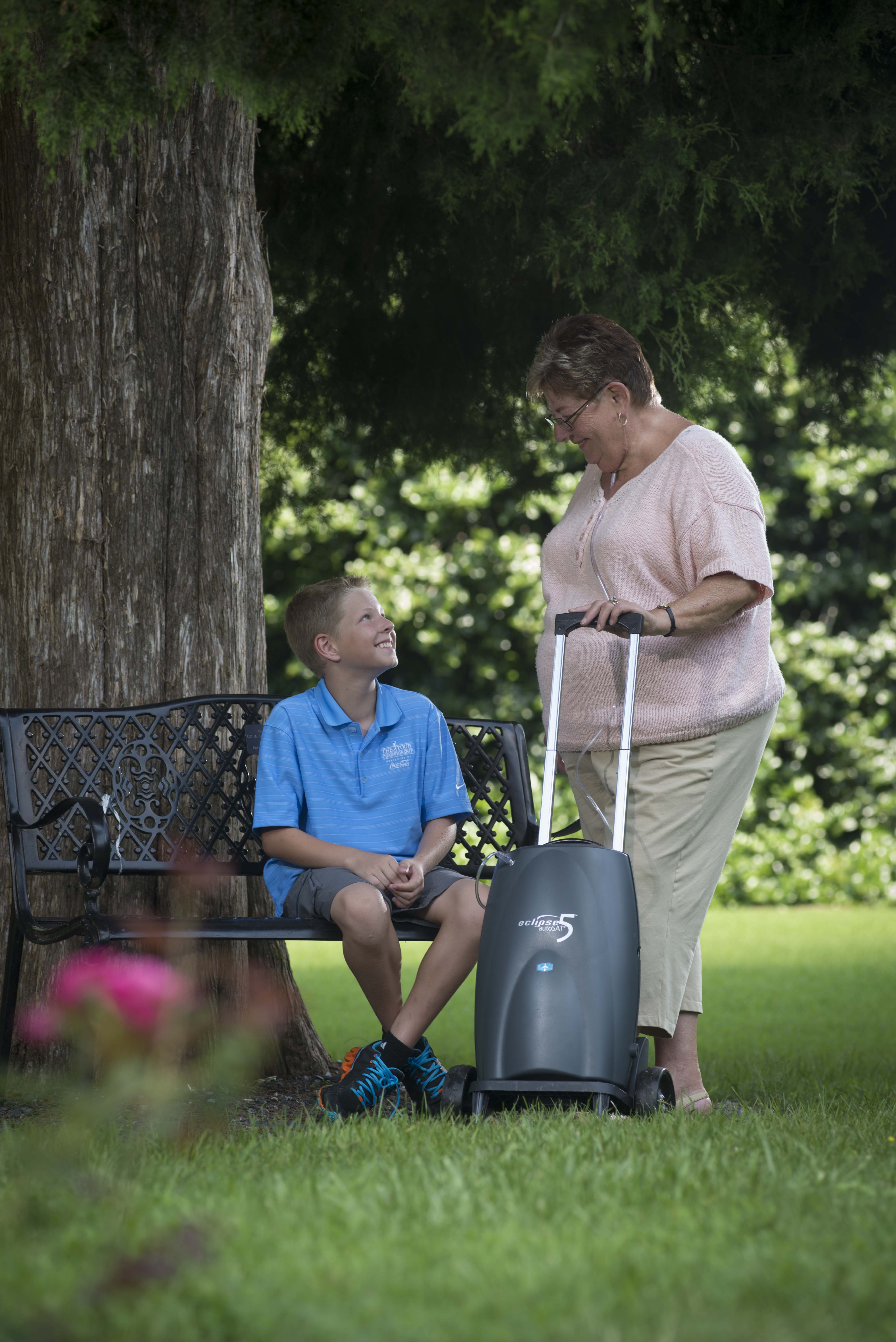
If you need both pulse and continuous flow oxygen, you can use an oxygen tank because there is a valve you can adjust to have the option to do both. If you still want a more portable option, the Respironics SimplyGo is one of the best portable oxygen concentrators that offers a powerful pulse dose setting, but also gives the user a continuous flow option for when they need to adjust to their prescription.
The most popular pulse dose units are the Caire Freestyle Comfort, the Inogen One G5, and the Inogen One G3, because all of these units are under 6 pounds, and they can produce oxygen 1050 -1260 mil/min, and have a long lasting battery life that can also be replaced with an extra so you never have to go without oxygen.
There are a lot of factors besides your oxygen prescription that go into choosing your oxygen device, but understanding your flow rate and your oxygen prescription is something your respiratory specialist will go over with you first before they ask you any other questions. Your oxygen requirement will weed through and narrow down your search, so be sure you have this information before you call us so we can assist you effectively and efficiently!
Overview

Oxygen therapy is a huge step in your life and it means that your disease has progressed to the point of severity where you can no longer survive without supplemental oxygen. Therefore, it is so crucial for you to take the necessary steps to find that best portable oxygen device that will allow you to continue doing the things you love, comfortably.
Oxygen therapy is not a bed rest sentence, you should still be able to enjoy everyday activities, and once you have adjusted to LTOT you will find that you are more capable of doing more things, even more than before you needed supplemental oxygen.
Every part of your body needs oxygen, every single organ and every single cell. If your lungs are unable to function properly and provide for your body, it will start to deteriorate. You will feel irritated, moody, tired, nauseous, and much more. Oxygen therapy assists your lungs in producing oxygen for your body so you feel better and live longer.
Both oxygen tanks and portable oxygen concentrators will help you get the oxygen you need, but one method will be better for you than the other depending on your lifestyle. For example, if you are an active person, you need a portable oxygen concentrator so that you can bring your oxygen with you wherever you go with ease.

If you need to save money, you can talk to a respiratory specialist about how to purchase a refurbished unit for less, or how you can set up a financial plan to help you pay for your oxygen device over time rather than up font.
You also have to take into consideration how durable your breathing device is, and how long it is rated to last. The longer you can have one machine the more money you can save by not having to get a new one every few years, whether yours breaks or you need to increase your oxygen intake.
There are still some things you need to know about oxygen therapy like, the functionality and tips to get the most out of your oxygen device, so be sure to follow our blog posts as we come out with more information like this is the near future!
For now we hope that this guide has given you some insight into buying your oxygen device whether it is a portable oxygen concentrator or another alternative. If you have any further question please comment on this blog post, or email us at info@lptmedical.com.
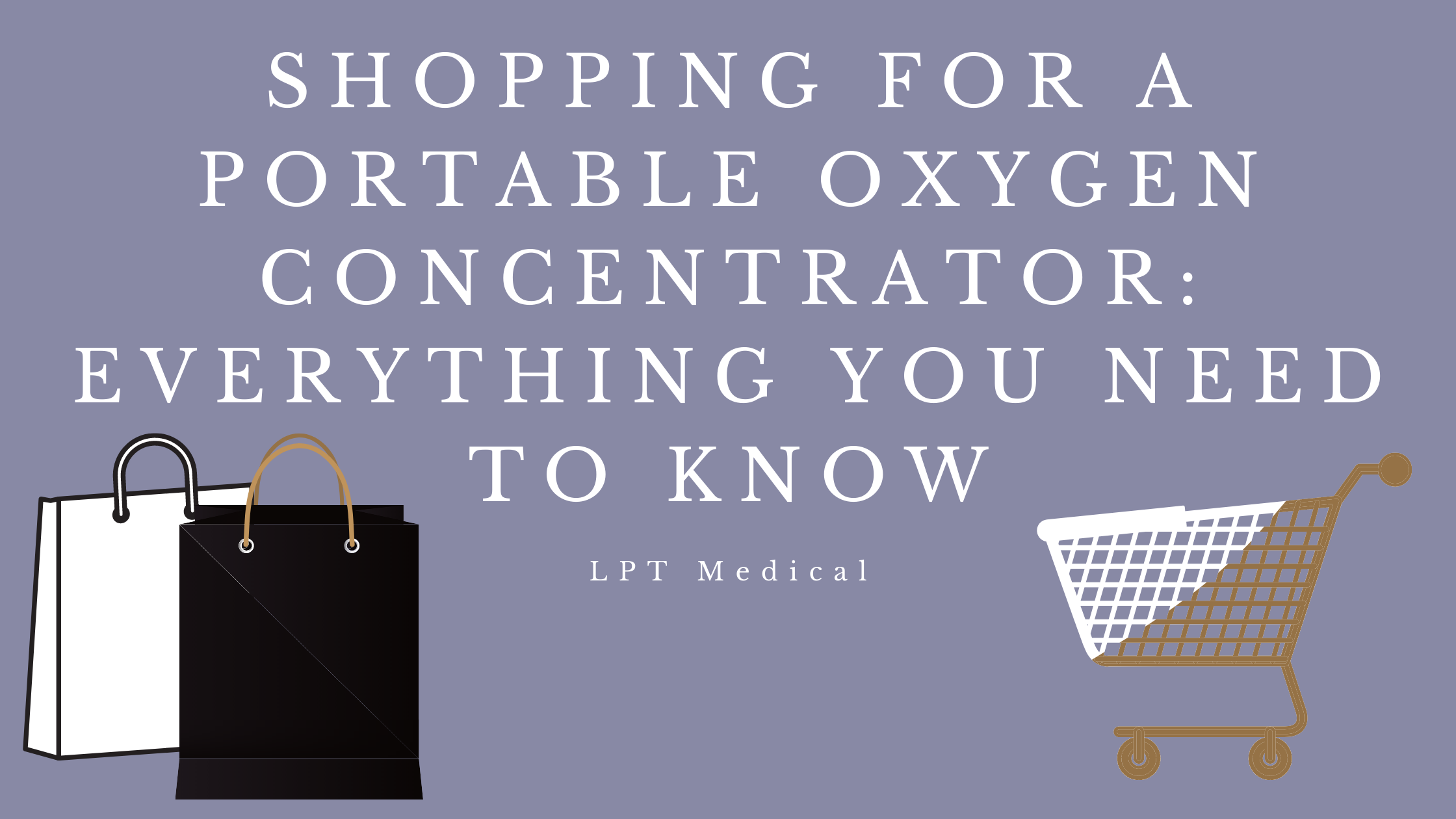
If you are new to the world of oxygen equipment this article is a great place to start. If you are an experienced oxygen user but have been thinking about changing your oxygen device, this is also a great article for you!
Oxygen therapy has been used to treat respiratory illnesses such as pneumonia as early as 1885. Fast forward to 1970, industrial gas suppliers were delivering oxygen tanks and cylinders to oxygen users, and later in the 1970’s, home oxygen concentrators were developed. Concentrators were designed to pull air from the surrounding areas so the oxygen user did not have to re-fill their tanks, so while this was a step in the right direction, both of these methods of oxygen therapy posed an important issue: lack of mobility.

It was only in 2013 when a more portable and efficient form of oxygen therapy was developed and readily available, called portable oxygen concentrators. These devices have the mobility of oxygen canisters, but never need to be refilled similar to a home oxygen concentrator.
Many oxygen users have the option: They can choose between a traditional oxygen tanks or a modern portable oxygen concentrator (POC). If they decide to go with a POC, subsequent decisions about which brand, make, and model they want to go with must be made. Which is where LPT medical comes in.

LPT Medical became one of the most reputable oxygen supply companies in Boca Raton, FL, Denver, CO, and now nationwide because we carry the most efficient and affordable oxygen equipment on the market.
{{cta('43b79c5e-6bd6-4f02-ac27-2d038d20c146','justifycenter')}}
Since 2013, there have been model after model, and new manufacturers popping up, selling portable oxygen devices, so the market has become saturated with "top of the line" equipment, making it difficult and overwhelming for the everyday oxygen patient to find the right device for their needs. Shopping for a portable oxygen concentrator is not for the faint of heart, it is a tedious task and something that takes up a lot of time and research.
This article is square one. We will tell you what factors to look for while shopping for a portable oxygen concentrator; things like battery life, weight, and flow settings are 3 of the most important factors to understand, and beyond that you should also take into consideration the sound level, if it is CPAP and biPAP compatible, if there is a warranty, and how you will afford a new or used POC.
The 3 most important factors to look out for when shopping for a POC

Battery Life
Battery life is probably one of the most important factors you should consider while shopping for a POC, after all, this is one of the main components that will influence oxygen users to ultimately decide on switching from traditional forms of oxygen therapy like an oxygen tank or canister.
Having an oxygen device that runs off of batteries and never runs out of oxygen is the ultimate freedom! Freedom from dealing with oxygen re-supply companies every week, and freedom from the fear of running out of oxygen should you leave the house with a small canister of oxygen for over a few hours.
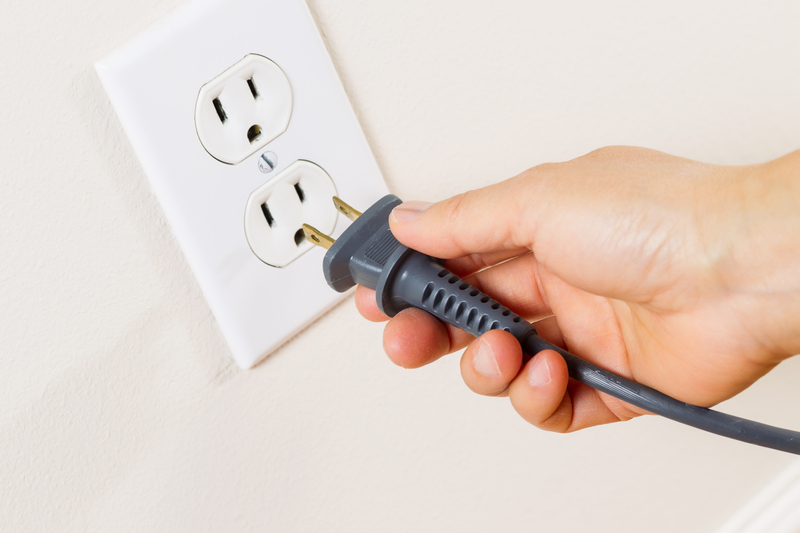
So the next step is choosing an oxygen device with battery life that will fit into your daily schedule. For instance, if you work from home, or if you spend a lot of time at home, there is no reason for you to spend extra money on a double battery when you have the option to get a device with a single battery. On the other hand, if you like to travel, have a high oxygen output prescription, or enjoy exercising, opting for a double battery device is going to be worth the extra money spent.
These are the kind of questions our respiratory specialist in Denver, Colorado and our other respiratory specialist in Boca Raton, Florida will ask you over the phone in order to help us determine which POC they should recommend for, not only your oxygen prescription but also your lifestyle.
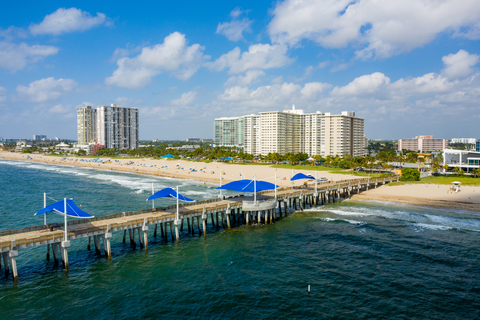
Depending on the brand, make, and model of your portable oxygen concentrator, the batteries will drain energy differently. For example: A reliable model like the Inogen One G4 Portable Concentrator offers two different battery types, 8 cell and 16 cell also known as a single or a double battery, to meet your different oxygen supply requirements.
One thing you should keep in mind, is that the life of your POC all depends on your oxygen prescription, so how much oxygen you need per minute and therefore the setting your POC is set to. For example, if you need a high oxygen output, and your POC is set to level 4 out of 6, the battery will drain faster than if it were set to level 2 out of 6.
Pulse dose concentrators deliver oxygen only when you inhale, and so they stop when you exhale. This pause during your exhale is essentially a break for you POC, and the reduced demand for power saves energy from the battery as compared to a continuous flow mode concentrator. Continuous flow oxygen concentrators is exactly what it sounds like; they offer a constant flow of oxygen regardless of when you inhale or exhale. Because the oxygen device never gets a “break” and it is continually flowing, this type of POC will require more battery power, and they are notably heavier devices.
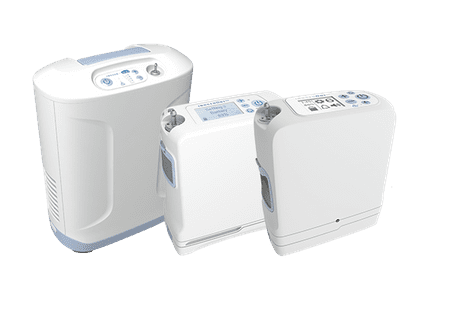
This brings us into the next section about the flow settings of you POC
Flow settings: continuous and pulse dose
Flow setting is the most obvious factor that will go into your decision while shopping for a POC. But it is also the easiest to narrow down, and not totally in your control.
Your pulmonary physician or you doctor will prescribe you a dosage of oxygen per minute and this is required to buy a portable oxygen concentrators from a licensed distributor. It is then the oxygen supply company’s job to adhere to the prescription and ensure you will be capable of fulfilling your prescription using the POC we recommend to you. Therefore the “flow settings” is not something you get to decide on, but it is something you should know and be fully aware of, because it can change.
{{cta('fa8abc2a-1e88-4fa3-82fd-1cb5b9ed43b2','justifycenter')}}
COPD is a progressive disease, meaning it gets worse over time. So, if you ever feel short of breath or notice that your COPD symptoms are worsening and you are taking you oxygen therapy as it is prescribed, you should go and see you doctor and see if you need to change your oxygen prescription.
There are POCs that allow you to switch from pulse flow settings to continuously flow settings, like the Respironics SimplyGo. The SimplyGo is the very lightest continuous flow POC on the market, and its battery can actually outlast a lot of other reputable machines out there. This is because it can operate while using one or two batteries. One battery will be perfect for things like exercising, running quick errands, and doing things around your home, while using two batteries is ideal for traveling, road trips, and extended trips away from your home!
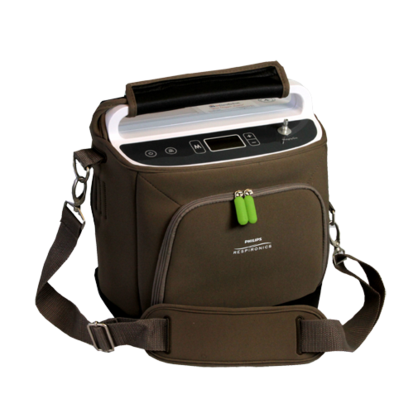
Weight
How much a device weighs is the other important factor that you should consider when purchasing a portable oxygen concentrator. Most of the time, people are looking for the most lightweight design, and in this case we suggest looking at the Caire Freestyle Comfort (5 pounds), or the Inogen One G5 (4.7 pounds), or the Respironics SimplyGo Mini Portable Oxygen Concentrator (5 pounds). And while the Inogen One G4 (2.8 pounds) is even lighter, the One G5 and Freestyle Comfort are powerful enough to accommodate mostly every oxygen patient with pulse dose oxygen needs, whereas the One G4 covers a few oxygen patients with a specific oxygen prescription.
And while there are devices that are powerful and lightweight, some people’s oxygen needs a greater than what these particular machines are capable of.
If this is you, you should not shy away from the “heavier” POCs because even though they are not extremely lightweight, they are designed to be portable and easy to maneuver, unlike the restrictive nature of even the lightest weight oxygen tank. For instance, the SeQual Eclipse 5 Portable Oxygen Concentrator is 18.4 pounds.
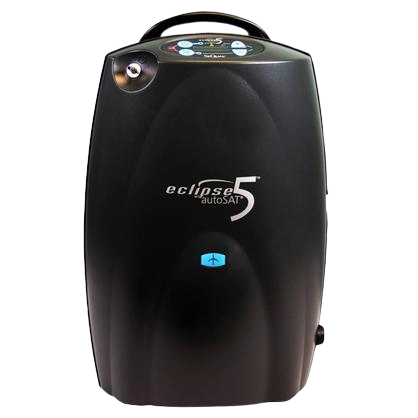
This is a continuous flow POC, and the SeQual Eclipse 5 is one of the most, if not the most, popular continuous flow portable oxygen concentrators on the market. It has a notable long-standing track record for being durable and reliable because it was designed and approved by the U.S. Military.
So even though the Eclipse is heavier than the pulse flow concentrators, standing 19.3” H x 12.3” W x 7.1” L, the SeQual Eclipse 5 is still easy to travel with, easily fitting underneath the seat in front of you! It comes with a wheeled travel cart that makes pulling your concentrator behind you seem effortless.
The travel cart is equipped with oversized wheels, an elevated platform, and a telescopic handle. The oversized wheels and elevated platform make going up curbs and stairs a breeze. They also help protect your concentrator from water when you have to go over puddles or if you live in Denver, Colorado and you have to worry about walking through snow in October through May.
The Respironics SimplyGo is the lightest continuous flow POC on the market, and it only weighs 10 pounds. This device comes with a carrying cart, or a strap to carry it over your shoulder, but 10 pounds tend to be too heavy to carry in that way. Most folks would opt for the cart to pull behind them.
Other factors
Sound level
The noise you POC makes is a personal preference, and something you should consider if noise tends to bother you. Newer models and pulse flow devices tend to be quieter because of the more modern technology available and the pulse flow machines do not need to be as powerful as a continuous flow device.

Some devices make noises similar to a fan or running water, it is a constant noise that some people would consider “white noise” and can even be relaxing, and can notably reduce anxiety. There are times where customers reach out to us and let us know that their device is making an obvious clicking noise from time to time. Most people will reach out because they are worried their POC is broken, but it is actually perfectly normal. And because the clicking noise is not constant most people do not pay any mind to this once they know it is not an issue with their POC.
Some devices are quieter than others, so if noise is a component of your priorities that you want to take into account when shopping for a POC, be sure to let your respiratory specialist know this when you speak with them over the phone at 1-(800)-946-1201. They will have a list of recommendations that they will be able to narrow down knowing how much you value silence or vise versa.
CPAP and BiPAP compatibility
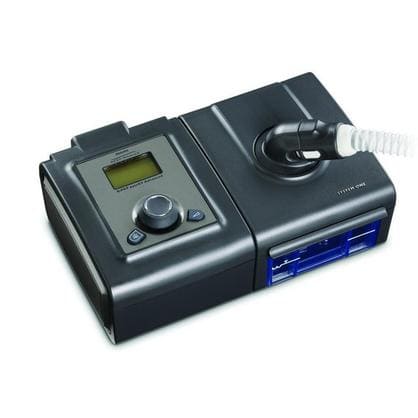
Every device that we sell is CPAP and BiPAP compatible. However whether or not you should use your POC at night should be discussed in depth with your doctor and it will be a part of your oxygen prescription. So depending on the hours per day you need oxygen, and the flow setting at which it needs to be administered throughout the day and night, will greatly influence which device we end up selling you.
If you have sleep apnea and you need a CPAP or BiPAP device while you sleep, you may also need oxygen as well. This is important for us to know beforehand, because if you are intending on using your POC while you sleep, then we must be sure that it has the capabilities of administering the oxygen you need while you sleep and not just the oxygen you need during the day.
Sleeping with oxygen can be challenging to get used, both at night and even resting throughout the day. We wrote a blog post recently about the challenges of sleeping while using oxygen and how you can overcome them and get back to a regular sleep schedule.
Click here to read The Complete Guide to Sleeping With Supplemental Oxygen
Warranty
If you are buying something new, it is always smart to go with the company that will give you a warranty. Warranty will cover expenses associated with the device should anything malfunction. At LPT Medical, we cover every new device that we sell for 3 years, and we even warranty our used machines on a case by case basis.
Affording a new or used POC

Many people will shy away from shopping for portable oxygen concentrators because they will see on google that the prices can range from $1,000 to $3,000, so without contacting anyone about these prices, they dismiss the idea of ever owning their own POC. The simple truth is that our devices never cost as much as they are being advertised online, but we are obligated to post certain prices online that align with our manufacturer’s policies. In order to speak with a respiratory specialist about the real prices for the POC you're interested in, just call us at 1-(800)-946-1201.
So not only are you not able to see the promotional deals online, but we offer a lot of alternatives would allow you to have your own POC without breaking the bank. We are able to offer you a payment plan in order t pay for your POC, we will set this up together so you do not have to pay a large sum up front. You also have the option to buy a used and refurbished unit that will be a lot less expensive than a brand new unit.
Still on the fence?
It is understandable to be unsure about whether a POC is the best option for you. The bottom line is that even if you like to stay at home most of the day or be active as much as possible, modern oxygen therapy technology will offer benefits in many facets of your life, and this is something you should seriously consider.
Technology is constantly updating with expectations to make people’s lives easier. So if you have a serious pulmonary disease, having the most modern oxygen therapy equipment is the one of the best ways to treat your disease, and the easier you can do that, the better.
The most important aspect of oxygen therapy you do not want to have to worry about, is running low on oxygen. With a POC you will never have to worry about that, because the device extracts the surrounding air and compresses it into medical grade oxygen.
POCs nowadays are designed to be portable, no matter your flow setting. Even if you need a larger device in order to provide the oxygen you need, they are easy to maneuver. Every year, our manufactures are working on new designs, with the intentions of making the most portable lightweight oxygen device that is powerful enough to meet any oxygen users' needs. Which is one of the reasons we offer a buyback program. You are able to sell your device back to us if you become interested in a different unit in the future.
We work with every customer on a case by case basis, so if you are unsure about whether or not you want to buy a portable oxygen concentrator the best way to make the decision is to reach out to us so we can help determine if a POC is right for you and your lifestyle, and how we can work with you to afford it.
Please leave a comment or email us at info@LPTmedical.com and we will gladly connect you with someone to answer any and all of your questions.
.png)
Chronic obstructive pulmonary disease (COPD) is an umbrella term that represents two separate diseases: chronic bronchitis and emphysema. The foer affects around 8.9 million Americans and the latter affects around 3 million Americans. One of the characteristics of both of these diseases, however, is that they both develop over the course of many years leading to permanent and irreversible damage to the lungs and airways.
The only way to slow the progression of COPD is with a carefully planned treatment regime organized by your doctor or pulmonologist. These plans typically involve a revised diet, a strict exercise plan known as “pulmonary rehabilitation,” smoking cessation, and supplemental oxygen therapy. If you have another condition such as sleep apnea which can result in complications with COPD, your doctor will likely treat this with medication or other forms of therapy.
While it may not seem like you have much of a say in how your disease is treated, you’ll be surprised to find that there are a lot of decisions to make after being diagnosed with COPD. One of the first, and likely most consequential decision you’ll make is what oxygen device you would like to use. There are many choices including oxygen tanks, liquid oxygen tanks, and stationary concentrators. But there’s only one type of oxygen device that will provide you with the ultimate comfort and freedom in your daily life and that’s portable oxygen concentrators.
{{cta('fa8abc2a-1e88-4fa3-82fd-1cb5b9ed43b2','justifycenter')}}
In this post, we’ll take a look at one of the most recently released portable oxygen concentrators, the Caire FreeStyle Comfort, and how it provides oxygen patients all over the country with more convenience than ever before. In order to get the right oxygen concentrator for you, be sure to speak with your doctor first to learn what your oxygen needs are. If you have any questions about oxygen concentrators or supplemental oxygen in general, be sure to leave them in the comment section below.
It’s one of the Lightest Portable Oxygen Concentrators
Weight is usually the first concern anyone has when they start looking at oxygen devices, and for good reason. Just a quick internet search will bring up hundreds of different oxygen devices, many of which weigh 10 pounds or more. For someone who suffers from a respiratory impairment, this can be difficult if not impossible to manage, especially for people who enjoy going on long trips.
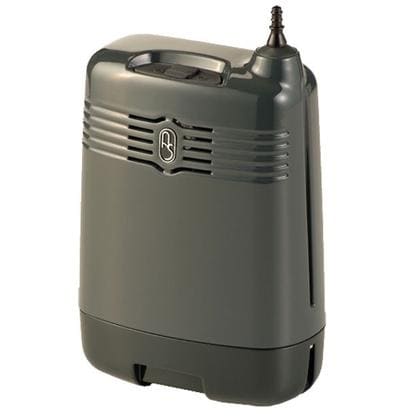
Oxygen devices vary greatly in terms of weight. The AirSep Focus, for example, weighs in at only 1.75 pounds, light enough to carry on your belt buckle. The problem, however, is that it only provides you with 330 ml/min of oxygen making it off-limits for the vast majority of oxygen patients. On the other end of the spectrum, you’ll find continuous flow oxygen concentrators and oxygen tanks which can weigh as much as 20 pounds. This is far too heavy to carry on your shoulder, and for some people, they’re even too heavy to wheel around using a rolling cart.

The Caire FreeStyle Comfort hits the sweet spot when it comes to weight. While it’s not light enough to carry on your belt buckle like the Focus, the FreeStyle Comfort still only weighs 5 pounds making it easy to carry around on your shoulder without affecting your walking or causing back pain. You can enjoy long vacations on the other side of the world or a walk in a local park without your oxygen concentrator causing any unneeded stress or strain.
It’s Extremely Reliable
Have you ever gone somewhere and worried about whether or not your cell phone will work when you need it most? Nowadays, we are more reliant on technology than ever before, so ultimately, it’s best to invest in devices that we know will never give out on us. If anything this rings true even more for oxygen patients who have one additional device they need to rely on throughout the day.
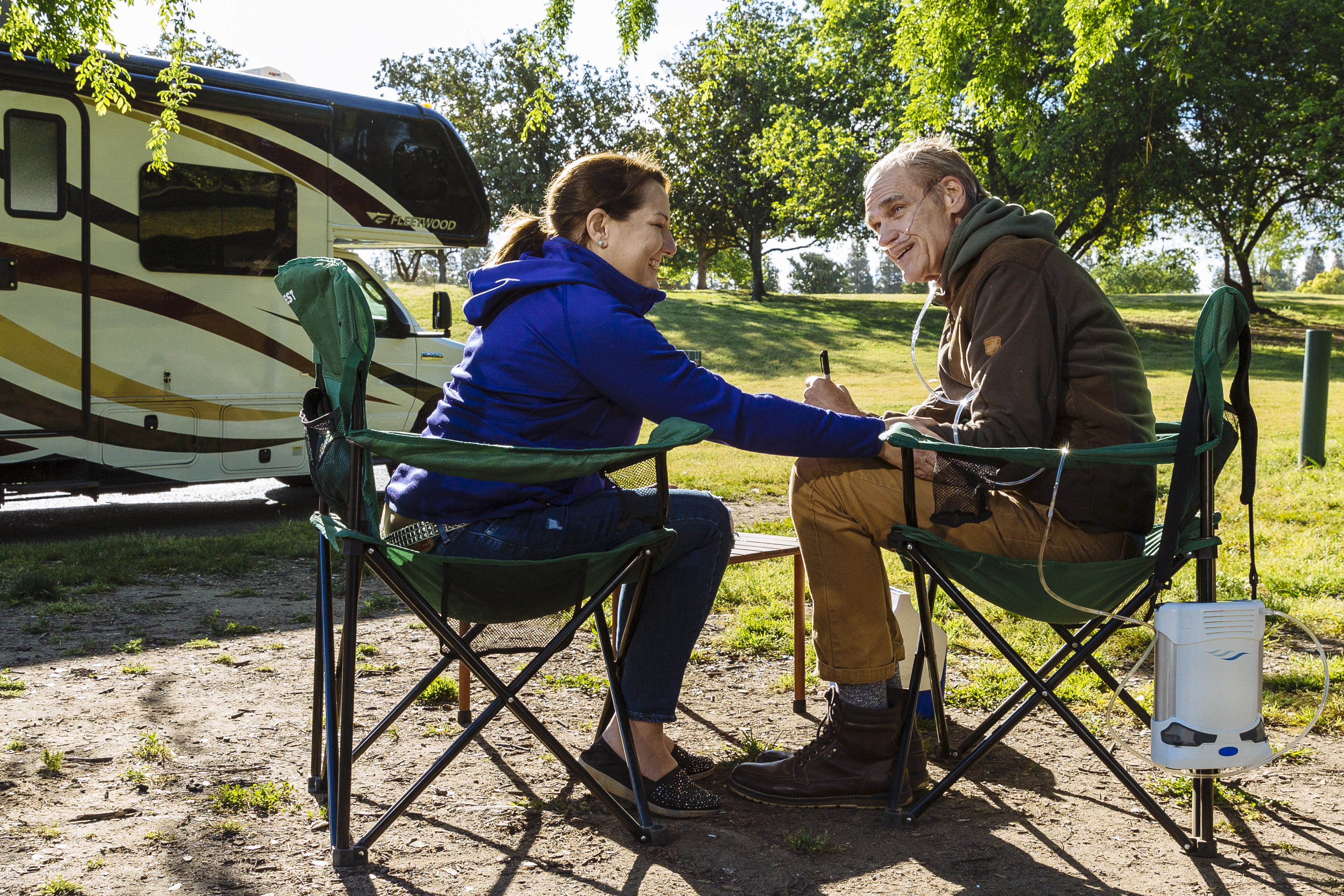
Straight out of the box, the Caire FreeStyle Comfort offers a much lower failure rate than most other oxygen devices. Due to the high production standards that Caire Inc. has for their units, they’ve all but eliminated things like factory defects. What this means is that when you receive your device in the mail, it will be in great working condition so you won’t have to worry about sending it back to the manufacturer for repairs.
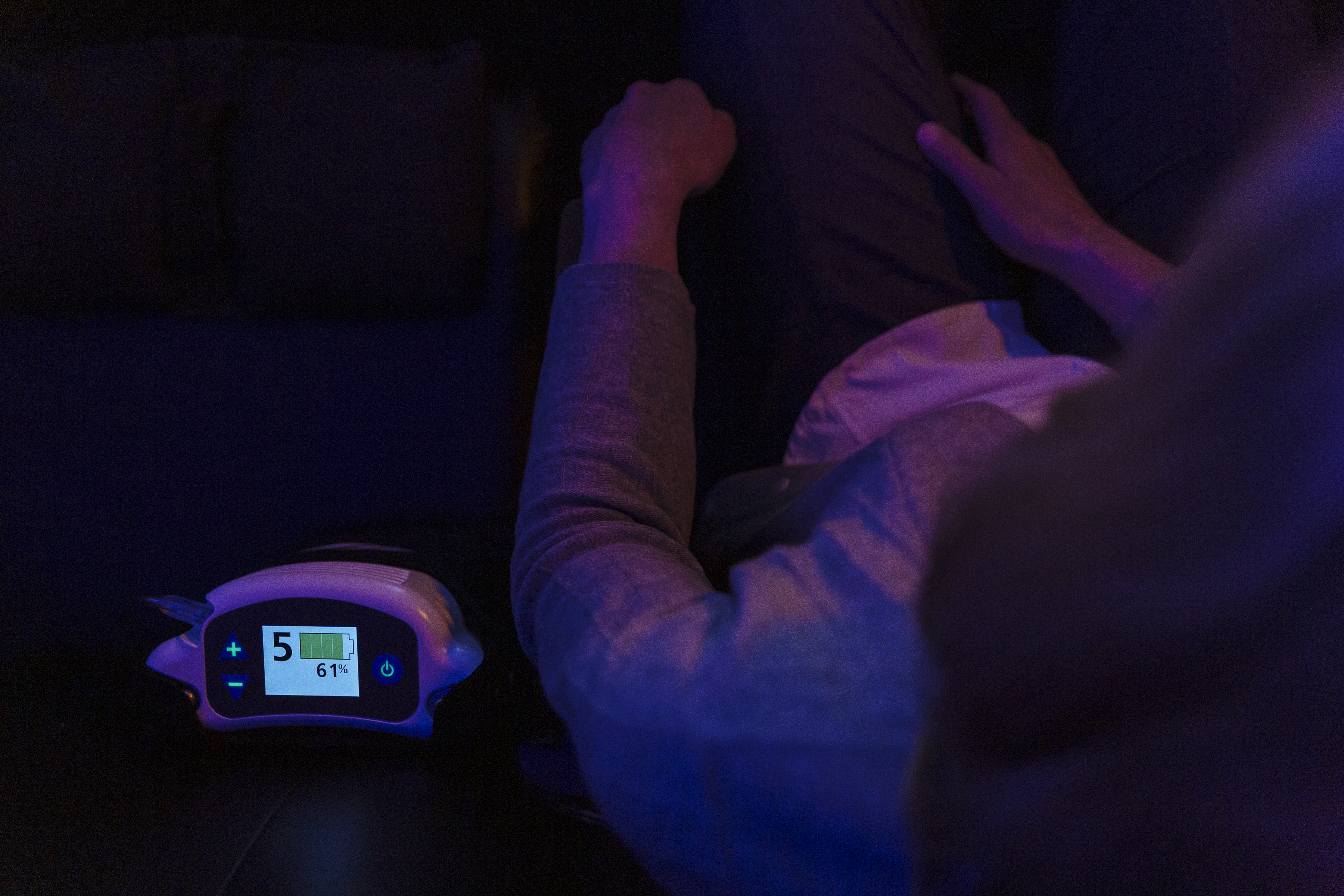
Another reason the FreeStyle Comfort is so reliable is that it was designed for 24/7 use. More often than not, COPD patients who are prescribed supplemental oxygen are required to use it for 15 hours each day or more and this often means using it while you sleep. The good news is that the FreeStyle Comfort can be run throughout all hours of the day and the night without being shut off or having to “cool down.”
It Has a High Oxygen Output
“Oxygen output” is defined as the amount of medical oxygen a device can put out in a given period of time. Oxygen output can either be written as liters per minute (LPM) or milliliters per minute (ml/min). And since the FreeStyle Comfort is a pulse dose portable oxygen concentrator meaning it puts out oxygen only when the user inhales, it’s always written as milliliters per minute.
{{cta('b59df0c1-c4de-47a8-8e1c-0d33d4b414aa','justifycenter')}}
The Caire FreeStyle Comfort provides 1,050 ml/min of oxygen output making it the second-best of any pulse dose portable oxygen concentrator in the world. The only other machine that can put out more oxygen is the Inogen One G5 which has a maximum oxygen output of 1,260 ml/min of oxygen and offers one additional flow setting for a total of 6. There are some minor differences between the FreeStyle Comfort and Inogen G5, so be sure to consult with a respiratory specialist before committing to either one.
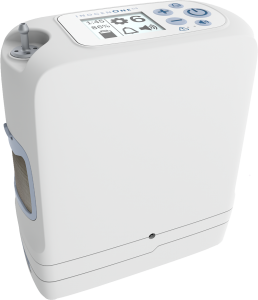
Another reason to invest in a portable oxygen concentrator that has a high oxygen output is that it gives you room to move up. As you know, COPD is a progressive disease meaning it only increases in severity. As your respiratory symptoms advance, you will need higher concentrations of oxygen in the lungs. So, for example, investing in a POC like the Inogen One G4 which only offers 630 ml/min of oxygen would not be a wise choice for most people, because even if it meets your oxygen needs right now, that likely won’t be the case a year or two from now.
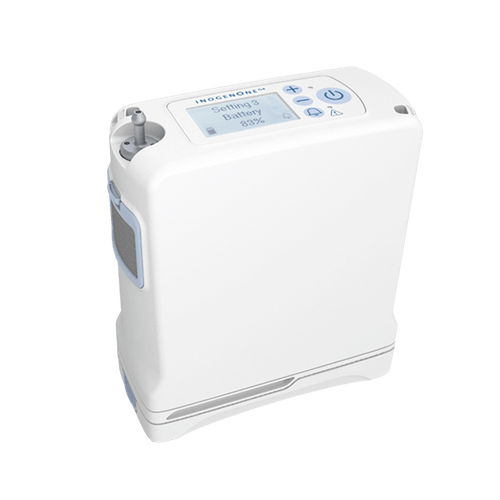
Fortunately, we have a great trade-in program here at LPT Medical. So if you’ve found yourself with a portable oxygen concentrator that doesn’t meet your needs, you can sell it to us and put that money towards a brand new portable oxygen concentrator. We also offer plenty of used portable oxygen concentrators if that’s something you’re interested in.
It Has Outstanding Battery Life
Battery life is synonymous with freedom; the more battery life your POC offers, the longer you’ll be able to stay out of your house. Drawing in ambient air and putting out medical grade oxygen requires a lot of energy, but due to decades of innovation, oxygen companies have been able to create batteries that are up to the task. All portable oxygen concentrators, including the Caire FreeStyle Comfort, use powerful lithium-ion batteries that allow you to run your concentrator for hours a day without having to be recharged.
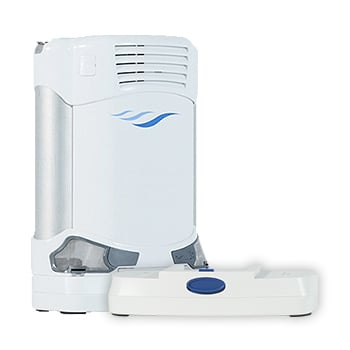
On the lowest flow setting of 1 with the 16-cell battery, the Caire FreeStyle Comfort will provide you with 16 hours of battery life! In many ways, this is overkill since you likely won’t be out of the house for this period of time, but it gives you more flexibility and leverage when you increase your flow setting. Even on the maximum flow setting of 5, you will have four hours of freedom. What’s more, if you purchase an additional 16-cell battery, that will double your battery life to eight hours.
Having this amount of freedom was unheard of in the past. Several decades ago when oxygen tanks were the only form of supplemental oxygen therapy, it would’ve been impossible for oxygen patients to travel far from home. Oxygen tanks need to be refilled after several hours of use and there’s no option to “carry extra batteries” like you can with a concentrator. What’s more, oxygen tanks have to be refilled by an oxygen specialist which is costly and very inconvenient.

Replacing batteries on the Caire FreeStyle Comfort is incredibly easy. Simply press the tabs on either side of the device and pull the battery off the bottom of the unit. Then snap the fully charged battery on to the bottom of the unit and you’re ready to go! If you have the external battery charger, you can have your old battery fully charged and ready to go once your new one runs out of juice.
It’s Incredibly Quiet
One of the biggest concerns many people have about making the switch from an oxygen tank or liquid oxygen tank is sound. Since these devices have no moving parts they’ve virtually silent. While portable oxygen concentrators produce some sound, people are often surprised to find that it is negligible. Last month, we published an article about the quietest portable oxygen concentrators in 2020, and the Caire FreeStyle Comfort made the list with only 43 decibels (dBA) of sound output. To put this into perspective, it’s about as loud as a quiet conversation.
.jpg)
With a quiet portable oxygen concentrator, you’ll be able to any number of things that are important to you, such as going to church, visiting a library, or going to see a movie without the fear of disrupting other people. Another benefit of a quiet device is that you’ll be able to use your POC while you sleep without it waking you up or causing you to get a poor night’s sleep. Keep in mind, however, that because the FreeStyle Comfort is a pulse dose POC, it is not compatible with CPAP and BiPAP machines.
It Has an Ergonomic Design
One of the greatest things about Caire Inc. is their willingness to go the extra mile to provide its customers with something truly special. The Caire FreeStyle Comfort is the first portable oxygen concentrator to be designed with an ergonomic curve. Rather than having a box shape like most portable oxygen concentrators do, the FreeStyle Comfort molds to your hip so that it doesn’t slide around as much. This is a small detail, but it goes a long way towards providing oxygen patients with a unit that’s more seamless and comfortable than ever before.
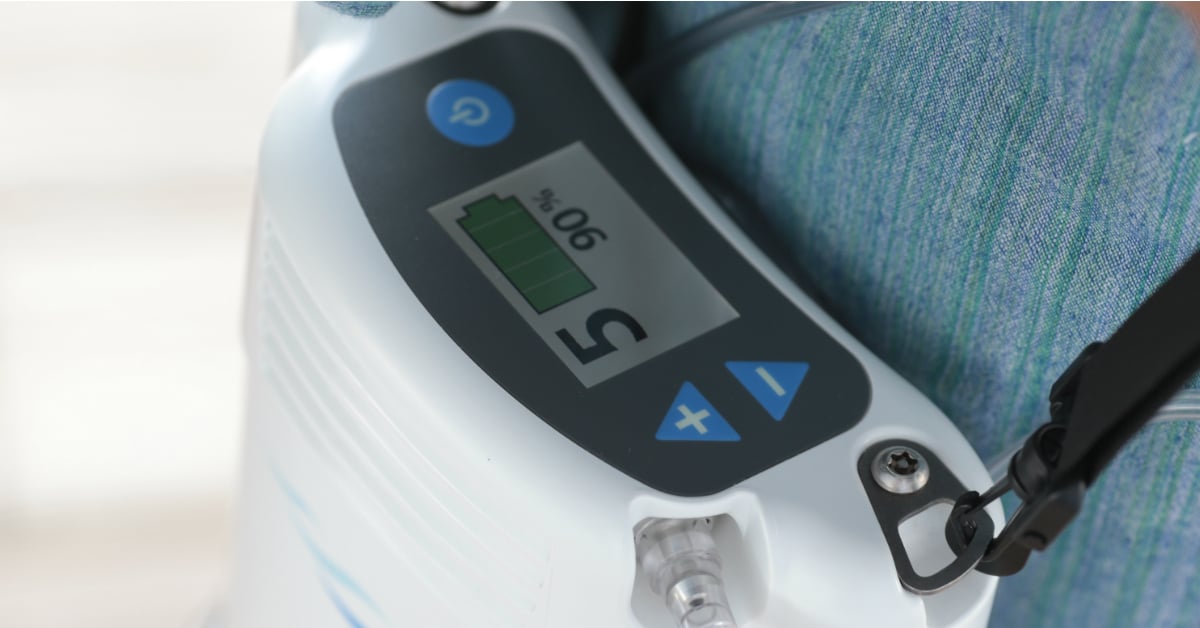
It’s also pretty incredible considering how far portable oxygen concentrators have come since traditional oxygen therapy devices. Oxygen tanks, for example, are very oblong making them incredibly difficult to maneuver and they’re too big and bulky to carry under your arm as you walk. On the other hand, the dimensions of the FreeStyle Comfort are 10” H x 7.3” L x 3.1” W, so it’s about the size of a lunchbox.
It Has Built-In Telehealth Technology
Another way Caire has gone above and beyond is by equipping every FreeStyle Comfort with telehealth technology. Telehealth, or “telemedicine” is the concept of providing health-related services remotely. An example of this would be a physician providing his/her patients with a checkup via a video call. Services like these are incredibly important, especially during the COVID-19 pandemic that we’re currently facing.
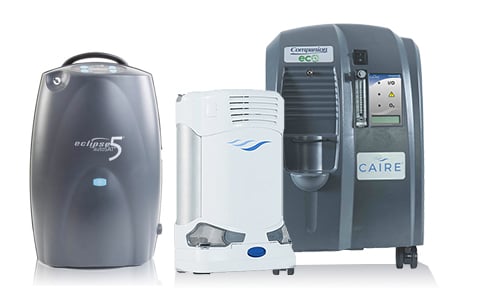
The Caire FreeStyle Comfort has built-in software that tracks your oxygen usage (flow rate, usage time per day, and more) then it relays that information to your physician and oxygen provider to help you monitor your progress. You’ll also be able to view this information through the online portal or smartphone application. This software is officially called CAIREview™ telehealth technology. It’s created by SynsorMed, and it’s available for the FreeStyle Comfort, the Eclipse 5, and the Caire Companion 5.
Conclusion
Choosing an oxygen device is no easy feat. There are literally hundreds, if not thousands, of oxygen devices out there, many of which are poorly made and likely won’t meet your oxygen needs and personal preferences. Ultimately, it’s best to stick with concentrators that are manufactured by popular and trusted brands such as Inogen, ResMed, and Caire Inc. Here at LPT Medical, we don’t sell any portable oxygen concentrators that we wouldn’t use ourselves.
In this post, we took a look at the FreeStyle Comfort, the latest and most advanced portable oxygen concentrator produced by Caire Inc. Due to the reliability, high oxygen output, and lightweight design of this POC, it’s ideal for the vast majority of oxygen patients. However, with that being said, it’s still important to speak with your doctor and understand what your exact oxygen needs are. Once you do that, reach out to our respiratory specialists here at LPT Medical and we’ll help you find the right concentrator for you that meets both your oxygen needs and your personal preferences.
.png)
Most people like to think of the internet as a place they can have all their burning questions answered. Just a quick visit to your favorite search engine and you can have some of the world’s most complex questions answered in a matter of minutes. However, while it is easy to use the internet, it’s still important to be wary about where we’re getting our information and how we use it.
When it comes to oxygen concentrators, there is a lot of misinformation to be found on the internet. Whether it’s confusion about the cost of oxygen concentrators, how they work, or anything else, this information might dissuade someone from purchasing one, and thus experiencing the many benefits that they offer. In many ways, this is understandable considering the fact that oxygen concentrators have a lot more features than other oxygen devices such as oxygen tanks and liquid oxygen tanks.
In this post, we’re going to go through a couple of the most common myths and misconceptions about oxygen concentrators and debunk them. By doing so, we hope to provide you with a more clear understanding of what your options are in terms of supplemental oxygen therapy. If you have any questions at all after reading this article, feel free to reach out to our respiratory specialists.
Myth #1 - They’re Not a Cost-Effective Option
Understandably, cost is a major concern for many oxygen patients. Money can be tight these days especially if you’re having to spend a lot on medication, doctor’s visits, and other healthcare costs. This is why many people are looking for the cheapest option when it comes to supplemental oxygen therapy.
While it’s certainly a good idea to look for the best deal possible on medical oxygen, it’s also important to think in the long term rather than the short term. Buying the cheapest oxygen concentrator might seem like a good idea at the moment, but you may begin to regret your purchase over the course of several weeks or months.

Oxygen concentrators can be deceiving in that they have a higher upfront cost than oxygen tanks or liquid oxygen tanks. But over the course of several years, oxygen tanks rack up a lot of costs that you simply won’t have to deal with if you own an oxygen concentrator. What’s more, oxygen concentrators that are manufactured by reputable brands tend to have a lifespan of anywhere between 5 to 7 years and they’re designed to be run 24 hours a day without being turned off.
Another reason oxygen concentrators are cost-effective is that they come with manufacturer’s warranties. A warranty is a contract that states the oxygen company will repair or replace a unit if it becomes damaged within a certain period of time. Most oxygen companies offer a 3-year warranty free of charge with the purchase of a new oxygen concentrator, but they can often be extended to a 5-year or lifetime warranties for an additional cost. However, for most people, three years is plenty of time to ensure that your oxygen device is working properly.

When you compare oxygen concentrators to other oxygen therapy devices like oxygen tanks and liquid oxygen tanks, the long-term costs are much lower. Oxygen tanks need to be refilled weekly and if you don’t want to drive to the nearest oxygen station, you will need to pay to have them delivered as well. Over time, this can become a hefty expenditure. On the other hand, oxygen concentrators do not need to be refilled and the only thing you’ll need to do is replace the sieve beds which are responsible for filtering out unneeded gases like nitrogen and argon.
Myth #2 - They’re Complicated and Difficult to Understand
The last thing most people want nowadays is another device or gadget to worry about. From smartphones to computers, it’s easy to feel overwhelmed by the complicated technology that surrounds us every day. This is why many people worry about purchasing an oxygen concentrator. They’re under the impression that it will be difficult to understand just like their phone or computer.
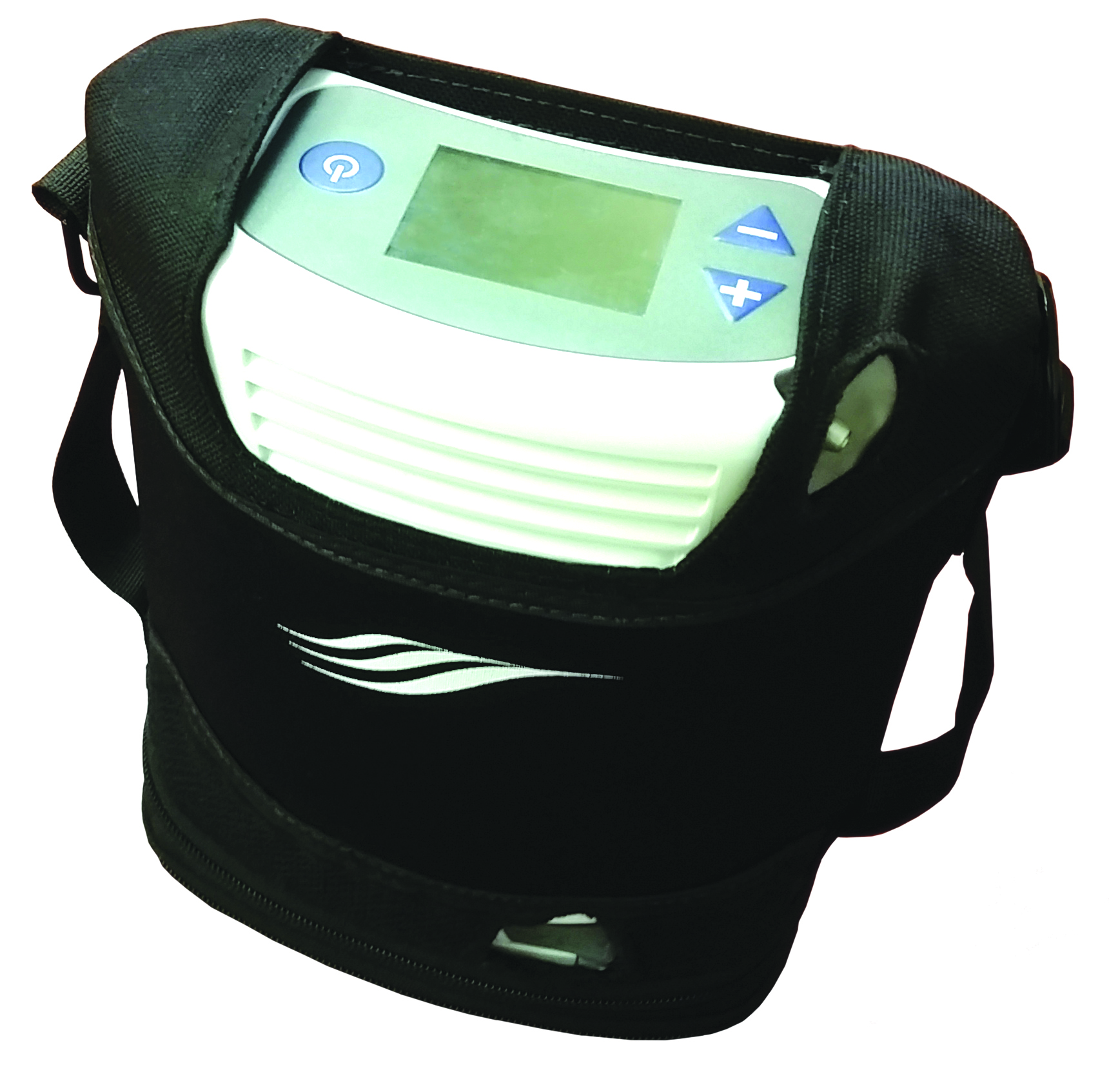
Fortunately, this is not the case! Oxygen concentrators are actually designed to be very easy to operate and many people would argue that they’re even easier to use than an oxygen tank or liquid oxygen tank. For example, one of the most popular portable oxygen concentrators on the market, the Caire FreeStyle Comfort, has just three buttons — one to turn the power on and off, and two to adjust the flow setting. The screen displays the flow setting you currently have selected as well as the amount of battery life you have remaining. Aside from learning how to replace and charge the battery, this is all you need to know in order to start using it.
{{cta('fa8abc2a-1e88-4fa3-82fd-1cb5b9ed43b2','justifycenter')}}
Another thing that makes oxygen concentrators easy to use is that they don’t have to be refilled like oxygen tanks do. Stationary oxygen concentrators like the Respironics EverFlo Q simply need to be plugged into a wall outlet in order to work and portable oxygen concentrators like the Inogen One G5 run off a portable battery. Oxygen tanks are much more difficult to learn because you need to know how to operate the tank as well as the oxygen concentrator that’s used to refill the tank. If you don’t want to hassle with this, you’ll need to have your oxygen delivered which is costly.
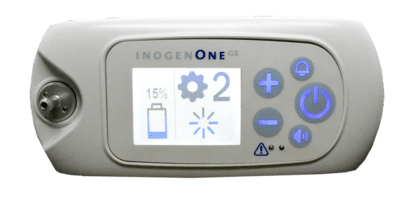
Several newer portable oxygen concentrators like the Inogen One G5 and Caire FreeStyle Comfort have technology that enables you to connect to your smartphone and view information pertaining to your oxygen usage. The good news, however, is that these features are entirely optional, so you can just use the basic features of the concentrator without ever connecting it to your phone.
Myth #3 - They’re Dangerous to Use
Safety should be your number one priority when you choose an oxygen machine. After all, the whole point of being on medical oxygen in the first place is to keep you healthy and happy. So there’s no point in adding any unnecessary risks if you don’t have to. Many oxygen patients are surprised to discover that oxygen concentrators are the safest option available to them.
Since oxygen concentrators take surrounding room air and filter out gases like nitrogen and argon, they don’t hold any compressed oxygen. The oxygen simply passes through the device and into the nasal cannula where it is inspired by the oxygen patient. Oxygen tanks and liquid oxygen tanks work differently because they actually hold oxygen within the unit. A normal oxygen tank holds oxygen gas while a liquid oxygen cylinder holds liquid oxygen. While liquid oxygen tanks hold oxygen at much lower pressures, they can still be dangerous to use.
![]()
Chances are when you go to pick up an oxygen tank for the first time, you will be provided with a long list of things that you’re not allowed to do. Here are just a few of the rules you’ll need to follow with an oxygen tank:
- Never smoke near an oxygen tank
- Oxygen tanks should be stored in a well-ventilated and non-confined space to avoid creating a fire hazard
- Use only water-based products rather than oily or petroleum-based products around an oxygen tank
- Never leave oxygen tanks or liquid oxygen tanks in a hot car
- Tanks should be stored so that they don’t move around while in transport
- Liquid oxygen tanks should never be stored on their side
- For more oxygen tank and liquid oxygen tank safety tips, check out this post
- For a list of oxygen concentrator safety tips, check out this post
As you can see, there are many things you need to watch out for when using any type of oxygen tank. And while there are certain things that you should look out for when you’re using an oxygen concentrator, they are nowhere near as dangerous as the alternative. For example, portable oxygen concentrators like the Inogen One G3 use pulse dose oxygen rather than continuous flow oxygen. The primary purpose of this is to conserve battery life, but it also serves a purpose as a safety feature. If you walk away from your oxygen device and leave it on by accident, the flow of oxygen will stop. This is because pulse dose concentrators have an advanced feature that only delivers oxygen when it detects a breath.
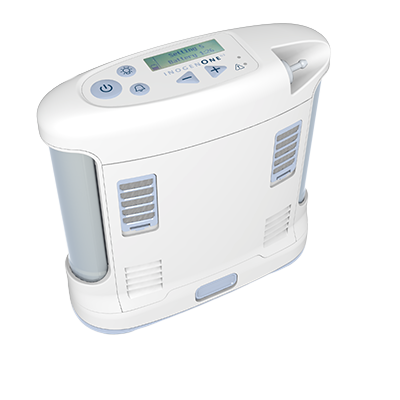
Another reason portable oxygen concentrators are so safe is that they are very small and lightweight. Most pulse dose portable oxygen concentrators are light enough to carry on one shoulder without it causing a lot of strain on your arm or back. Since you won’t be pulling it around using a wheeling cart, there’s no chance you’re going to bump into anything or get your nasal cannula caught on something as you’re walking.
Myth #4 - They’re Loud and Disruptive
One of the biggest benefits of oxygen tanks is that they’re virtually silent. As a result, many oxygen patients are afraid to upgrade to an oxygen concentrator because they fear it will be loud and disruptive to their daily activities. Fortunately, this is not the case! While oxygen concentrators do put out more noise than an oxygen tank, you’re unlikely to find anyone who believes they are “loud” or “disruptive.”
.jpg)
While some older oxygen concentrators — mainly home oxygen concentrators — ring in at around 45 to 50 dBA (decibels), newer pulse dose portable oxygen concentrators like the Inogen One G5 and Caire FreeStyle Comfort are under 40 dBA making them no louder than a whisper or quiet conversation. This is very impressive considering how powerful and reliable these devices are.
All-in-all, while oxygen concentrators do make noise, it’s nowhere near as bad as people expect it to be. You’ll still be able to go to church, a library, or a friend’s house without feeling like you’re a burden to anyone. And if you’re someone who needs to be on oxygen 24/7, your oxygen concentrator won’t cause you to lose any sleep.
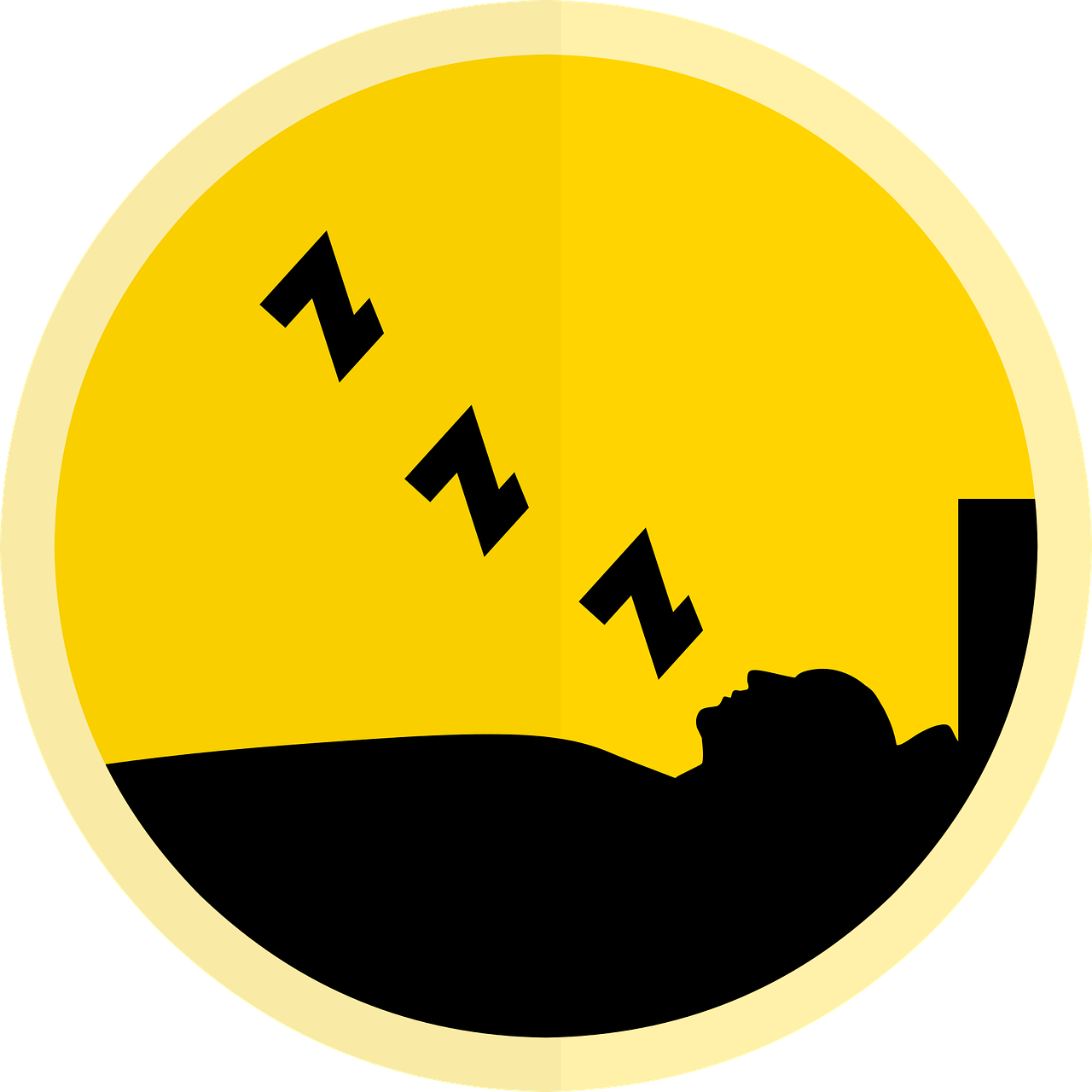
Myth #5 - They Don’t Work at High Altitudes
If you’ve lived at sea level your whole life, you might never think about the effect altitude plays on not only your health but your ability to use a medical oxygen device as well. The higher you are in altitude the more you will notice your COPD symptoms starting to get worse. Since the air is thinner the higher you go, it’s harder for your body to get the oxygen it needs. What’s more, if you don’t travel to high altitude very often, there’s a chance you could contract altitude sickness. This is when your body has a difficult time adjusting to this new atmosphere. During this time, it’s more important than ever to have an oxygen device that you can rely on.
![]()
Contrary to popular belief, most oxygen concentrators work just fine at high altitudes. The maximum operational elevation of the SeQual Eclipse 5, for example, is 13,123 feet above sea level. Considering the highest city in the country is just 10,151 feet above sea level, you’ll have no problems using this oxygen concentrator. Other oxygen concentrators will have similar maximum operational altitudes, but it’s important to check with your oxygen supplier if you’re planning on traveling to the mountains. Keep in mind that this does not apply to flying. When you’re on a plane the cabin is oxygenated so your oxygen concentrator will have no problems functioning on a plane.
How to Avoid Misinformation About Oxygen Concentrators
While oxygen concentrators offer oxygen patients more options than ever before, this has come with a price. Because oxygen concentrators vary so widely in terms of the features they offer, it has led to confusion about what benefits they actually offer. Above are just a few of the most common misconceptions about oxygen concentrators, but you’re sure to come across more as you do more research. If you want to avoid this, be sure to consult the user manual of the oxygen concentrator you have a question about. Most oxygen manufacturers make their manuals available to the public, not just people who have bought from them. Alternatively, feel free to reach out to our respiratory specialists here at LPT Medical and we can answer any question you may have.
![]()
Conclusion
Most people with chronic obstructive pulmonary disease are prescribed long-term oxygen therapy (LTOT). This is a type of supplemental oxygen therapy that requires patients to be on oxygen for 15 hours a day or more, seven days a week. As a result, it’s important to find an oxygen device that meets your long-term goals, not just your short-term needs.
Since oxygen concentrators have not been around very long in comparison to oxygen tanks, there tends to be a lot of misunderstanding about what they are, how they work, and what benefits they provide. The above are just a few of the common myths we wanted to debunk in order to help you make an informed decision about your health.
{{cta('43b79c5e-6bd6-4f02-ac27-2d038d20c146','justifycenter')}}
If you don’t want to spend hours researching oxygen devices online, we recommend reaching out to our respiratory specialists here at LPT Medical. Our primary goal is to understand your needs and preferences, then narrow down an oxygen concentrator that’s best for you. We also aim to provide oxygen concentrators for anyone who wants them so we offer many flexible options such as oxygen concentrator rental, used oxygen concentrators, refurbished oxygen concentrators, and brand new oxygen concentrators depending on your budget.
%20(1).png)
If you have chronic obstructive pulmonary disease (COPD), cystic fibrosis, or any other debilitating lung condition, you likely depend on a strict treatment regime that encompasses all facets of your life. Typical treatment plans usually involve an improved diet high in protein and fiber, an exercise routine that improves lung strength and endurance, and most importantly oxygen therapy which helps stabilize your lung condition and ensure blood oxygen levels are normal.
One concern many people have with these lifestyle changes is that they make you increasingly dependent on medical devices like your oxygen concentrator, nebulizer, or inhaler. If these devices stop working suddenly, you may be stuck in a situation where you’re unable to get the medication you need. This issue only gets worse as your disease progresses because your doctor may require you to use oxygen for longer periods of time each day.

Fortunately, we live in a time of innovation and the medical devices we have access to today are far more reliable than in the past. Portable oxygen concentrators, for example, are battery-operated oxygen machines that are praised for their reliability and long lifespan. Rather than going out of your house each day worrying that you may lose access to your oxygen supply, portable oxygen concentrators allow you to focus on things that are important to you in your day-to-day life.
If security is important to you, stick around because we’re going to take a look at the most reliable portable oxygen concentrators in 2021. Whether you’re a first-time buyer or you’ve owned a POC in the past, you’re sure to find something on this list that suits your lifestyle. If you have any questions, be sure to leave them in the comment section below or reach out to us to speak with a respiratory specialist.
{{cta('fa8abc2a-1e88-4fa3-82fd-1cb5b9ed43b2','justifycenter')}}
Why Choose a Portable Oxygen Concentrator?
You may be thinking to yourself, “what’s so special about portable oxygen concentrators?” After all, there are plenty of other options available like oxygen tanks, liquid oxygen tanks, and stationary oxygen concentrators. And while these oxygen devices have served their purpose for many decades, they simply can’t compete with the state-of-the-art design of modern portable oxygen machines.
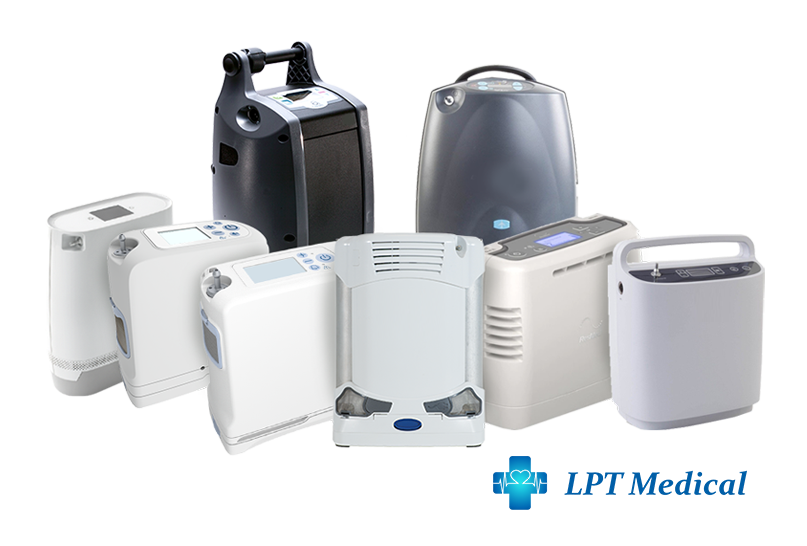
The truth is that oxygen tanks and stationary concentrators have overstayed their welcome in many ways. Oxygen manufacturers have shifted their focus to battery-powered portable oxygen delivery systems because they provide their customers with more freedom and convenience in their daily lives. Rather than being confined to your home with a heavy and bulky oxygen tank, POCs allow you the freedom to live life on your own terms.
At this point in time, portable oxygen concentrators are the only oxygen delivery devices that are approved by the Federal Aviation Administration (FAA) for in-flight use due to safety concerns. What this means is that if you choose to use an oxygen tank or liquid oxygen tank, you’re largely forfeiting your ability to travel long-distance. On top of this, other modes of transportation like driving, walking, or taking the bus will be much more difficult and stressful.
.jpg)
The Caire FreeStyle Comfort
If reliability is important to you, there is no better portable oxygen concentrator out there than the Caire FreeStyle Comfort. In fact, this is one of the only concentrators currently in use by military personnel meaning it’s a trusted product even under the most strenuous of circumstances. The Caire FreeStyle Comfort also sees use in a variety of other industries including space exploration laboratories, hospitals, and in-home use.

While Caire Inc. may not be a household name in the oxygen industry, you may recognize their products under the name AirSep, Helios, and SeQual. The Companion 5, for example, is one of their top stationary oxygen concentrator designs offering economic in-home oxygen delivery and easy-to-use controls. They’ve also produced continuous flow portable oxygen concentrators like the SeQual Eclipse 5 which offers up to 3 liters per minute (LPM) of oxygen and 9 pulse flow settings.
One of the most unique things about the Caire FreeStyle Comfort is its mobile application, CAIREView Telehealth Technology. This app can be downloaded on any phone, tablet, or computer and connect to your Caire FreeStyle Comfort via Bluetooth. It has two primary benefits. First and foremost, it enables you to track all your oxygen usage through a simple-to-use dashboard. It will provide you with information such as hours of use, flow settings used, and alerts.
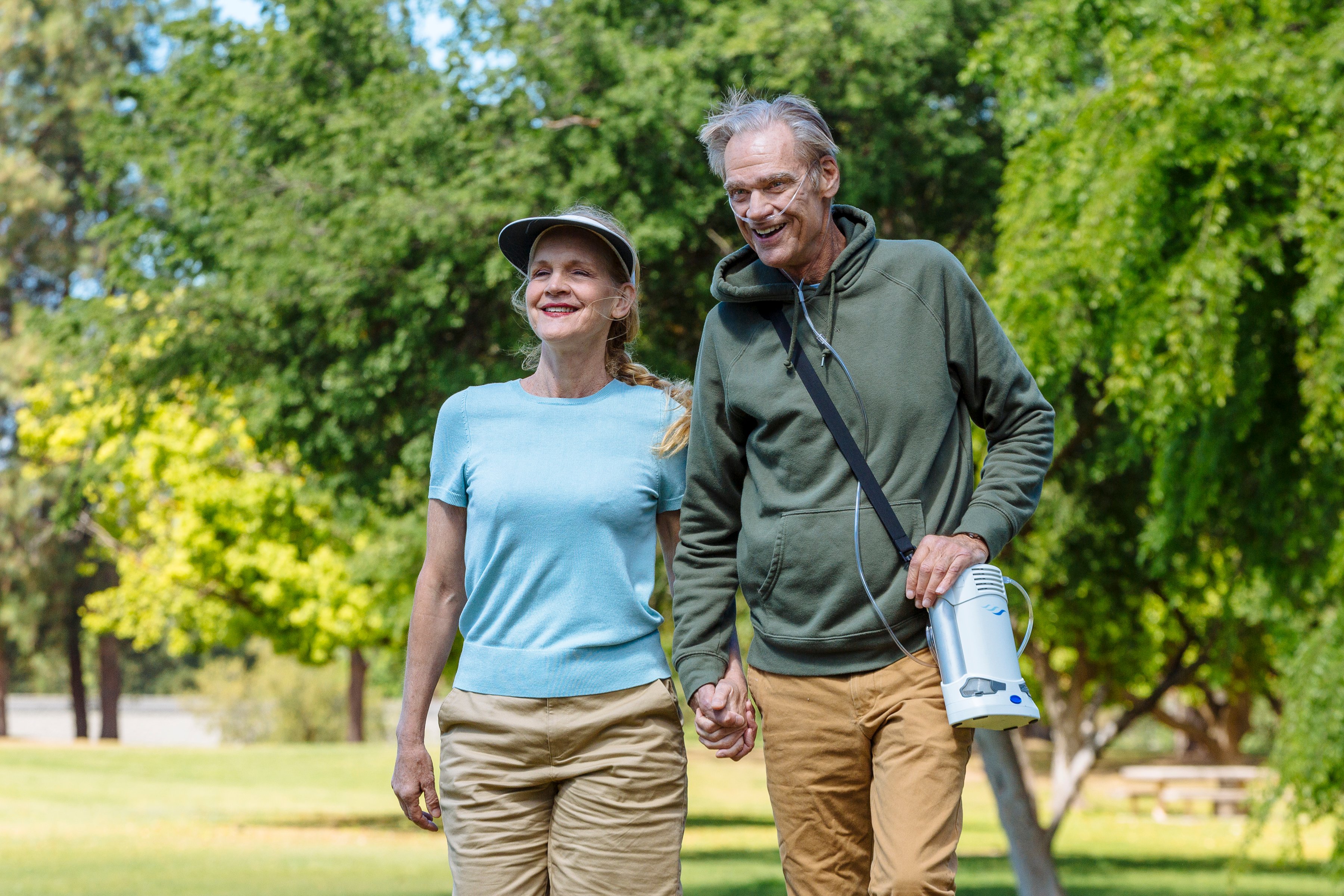
Secondly, this application allows for periodic monitoring to ensure that patients comply with their oxygen treatment plan. Clinicians will be able to view up-to-date data about your oxygen usage and assist remotely by monitoring your device settings. This feature significantly increases the reliability of your device, because in the rare chance that it stops working or you stop receiving the oxygen you need, your doctor will know about it immediately and he/she will notify you.
Caire FreeStyle Comfort Specs
|
Weight
|
5 pounds
|
|
Flow Rate
|
Pulse 1-5
|
|
Warranty
|
3-year
|
|
Height
|
10 inches
|
|
Width
|
7.3 inches
|
|
Depth
|
3.1 inches
|
|
FAA Approved?
|
Yes
|
|
Battery Duration
|
Up to 16 hours
|
{{cta('43b79c5e-6bd6-4f02-ac27-2d038d20c146','justifycenter')}}
The Inogen One G5
Inogen is one of the top pulse dose portable oxygen concentrator manufacturers in the industry. While Inogen has only been around since 2001, they made a name for themselves very quickly. While they started off with stationary oxygen concentrators, they made their way into portable oxygen concentrators with the Inogen One G1. There are currently five generations of Inogen POCs, and their latest, the Inogen One G5, is one of the most advanced on the market.

On most fronts, the G5 is pretty neck-in-neck with the Caire FreeStyle Comfort. They both offer 6 pulse flow settings, they’re both around 5 pounds, and they’re about the same size. However, the Inogen One G5 has a great reputation for having an extremely low failure rate and a long lifespan between 5 and 7 years.
Similar to the Caire FreeStyle Comfort, the G5 is accompanied by a mobile application called Inogen Connect. This app was introduced with the Inogen One G4 and allows you to manage your flow rate and device settings remotely. This is great if you carry your POC on your back and don’t want to take it out all the time to adjust your oxygen settings.
Inogen One G5 Specs
| Weight |
4.7 Pounds |
| Dimensions |
8.15" H x 7.19" L x 3.26" W |
| Flow Settings |
Pulse Settings 1-6 |
| Sound Level |
37 dBA @ Setting 2 |
| Expected Battery Life |
Up to 13 Hours |
.png)
{{cta('fa8abc2a-1e88-4fa3-82fd-1cb5b9ed43b2','justifycenter')}}
The Inogen One G3
Although the Inogen One G3 released all the way back in 2012, that hasn’t set it back when it comes to being a dependable portable oxygen concentrator. While the G3 certainly has a little less oxygen output than the Inogen One G5 or the Caire FreeStyle Comfort, it makes up for it with an array of useful accessories that help you customize your oxygen therapy.

One of the most unique accessories for the Inogen One G3 is the GO2 Carryall. This product is designed to look like any ordinary purse or handbag but it holds your G3 snuggly and securely inside. It also comes with both a hand strap and a shoulder strap so you can choose exactly how you want to carry your portable oxygen concentrator.
One thing you’ll notice right away about the GO2 Carryalls is that they’re way more fashionable than any other POC carrying case you’ve seen in the past. They come in either black or brown to match your wardrobe and they’re made of genuine leather so that no one would ever suspect there’s a portable oxygen machine inside. There’s also plenty of room for personal belongings like your car keys, a wallet, or your G3 user manual.

While fashion is important for many people, the most important thing about the GO2 Carryalls is that they protect your Inogen One G3. When your G3 is inside one of these bags, you can rest assured that it will be protected from things like scratches, dents, and even minor water damage. Although the GO2 Carryalls are water-resistant, they are not fully waterproof, so you’ll want to find some cover if you’re getting rained on.
All-in-all, the GO2 Carryalls make the G3 one of the most reliable oxygen concentrators on the market. These bags have a mesh material on the side where the intake vents are located so that your device never overheats or stops working. It also enables you to carry your Inogen One G3 conveniently at your side so that you can keep track of it. However, if the GO2 Carryalls don’t appeal to you, you’ll be happy to know that there are three other carrying options: the G3 custom carrying case, the G3 backpack, and the G3 rolling backpack.
Inogen One G3 Specs
|
Weight |
8-Cell: 4.8 Pounds; 16-Cell: 5.8 Pounds |
|
Dimensions |
7.25” Wide x 3” Deep x 8.75” High |
|
Flow Rate |
Pulse Flow Settings 1-5 |
|
Battery Life |
8-Cell: Up to 4 Hours; 16-Cell: Up to 8.5 Hours |
|
Power |
100-240 VAC, 50/60 Hz; 11-16 VDC |
|
FAA Approved |
Yes |
|
Warranty |
3 Years |
The Respironics SimplyGo
All of the aforementioned machines have been pulse dose portable oxygen concentrators. What this means is that they closely monitor your breathing rate and deliver oxygen only at the peak of your inhalation. The Respironics SimplyGo differs from these in the fact that it also has a continuous flow setting. In other words, it can deliver oxygen indiscriminate from your breathing rate. The Respironics SimplyGo can deliver up to 2 LPM of continuous flow oxygen.

One of the most important things to note about the Respironics SimplyGo is that it is the lightest continuous flow portable oxygen concentrator on the market. Whereas most continuous flow units need to be wheeled around on a carrying cart, the SimplyGo is light enough to carry on your shoulder or your back. This may not seem like a big deal, but for someone who’s been prescribed continuous oxygen, it can be a life-changer.
If you’ve been an oxygen patient for some time, you know that having to wheel around your oxygen concentrator can be a huge pain. Not only do you have to make sure that it’s not bumping into anyone but there’s always a chance of your oxygen tubing getting caught on something and damaging your unit. Walking in a busy area is difficult and it can distract you from what you’re trying to do.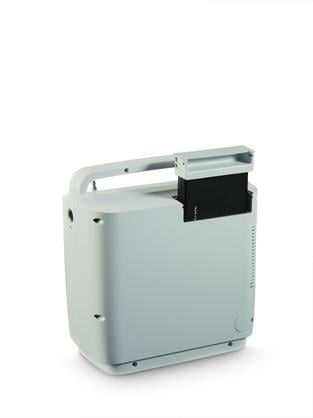
Using the convenient carrying case, you can ensure that you always have a reliable source of oxygen wherever you go. The Respironics SImplyGo was designed for people with the highest oxygen demands so it can run 24/7 without running into any problems. Since it’s a continuous flow POC, it’s perfectly compatible with CPAP, BiPAP, or APAP machines. In other words, it’s one of the most reliable portable oxygen concentrators for people who have both COPD and sleep apnea.
Respironics SimplyGo Specs
|
Weight |
10 Pounds |
|
Dimensions |
10” H x 11.5” W x 6” D |
|
Flow Rate |
Continuous Flow 0.5-2.0 LPM Pulse Flow Settings 1-5 |
|
Battery Life |
Continuous Flow Up To 0.9 Hours Pulse Flow Up To 3.0 Hours |
|
Power |
100-240 VAC, 50/60 Hz; 19 VDC |
|
FAA Approved |
Yes |
|
Warranty |
3 Years |
Tips for Extending the Life of Your Portable Oxygen Concentrator
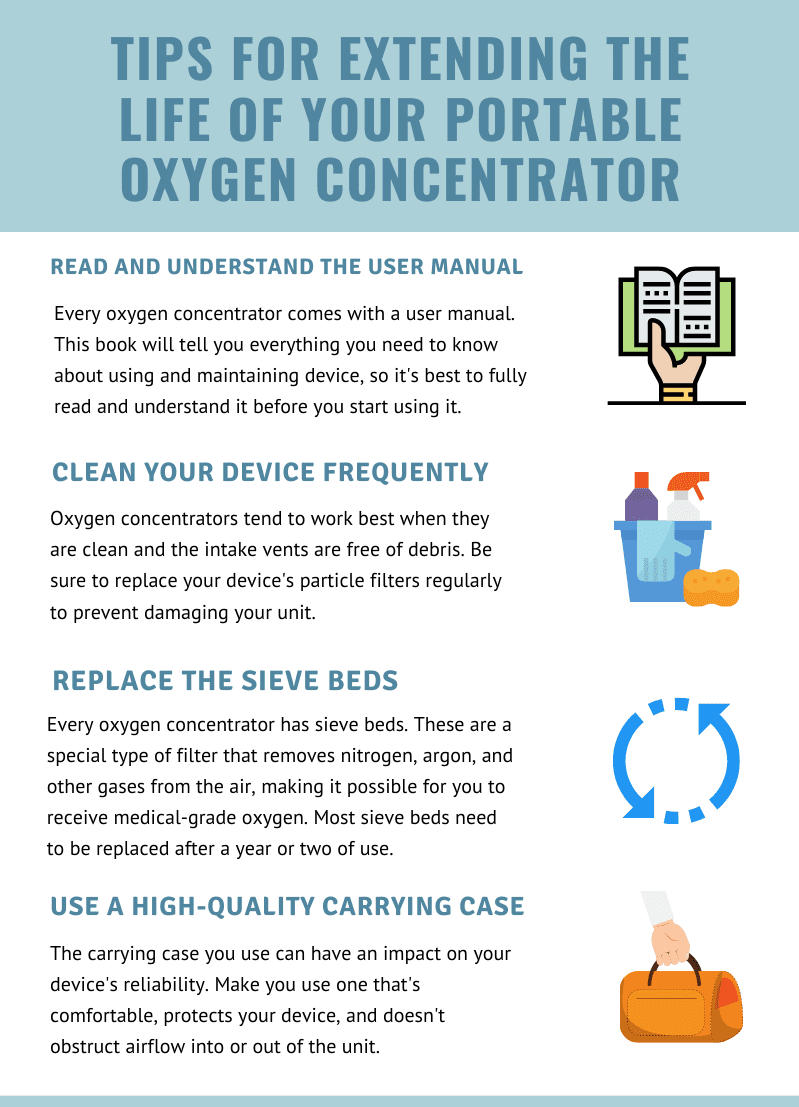
Conclusion
Dependability is one of the most important attributes of portable oxygen concentrators. If you’re looking for a POC, it means you want to be able to get out of the house and enjoy your freedom, so your device needs to be able to match your lifestyle. While there are plenty of great oxygen concentrators out there, the ones above will offer you the reliability you need to live life on your own terms.
If you’re still struggling to find the right portable oxygen concentrator for you, don’t hesitate to reach out to our respiratory specialists here at LPT Medical. We’ll walk you through all your options ensuring that both your oxygen needs are met and you have a unit that will give you the freedom you need to go about your daily life.


 So we can find the best portable oxygen concentrator for your needs!
So we can find the best portable oxygen concentrator for your needs!


